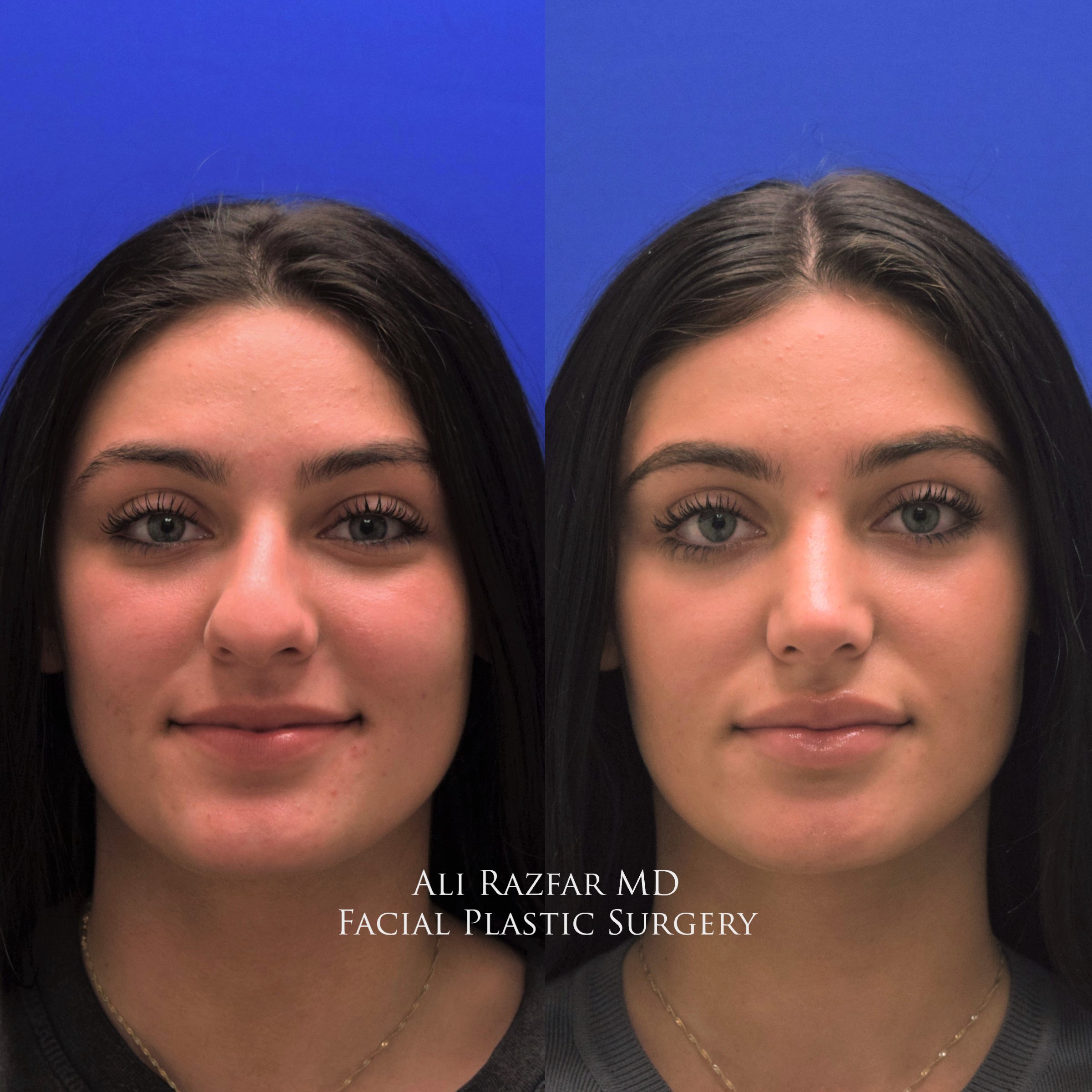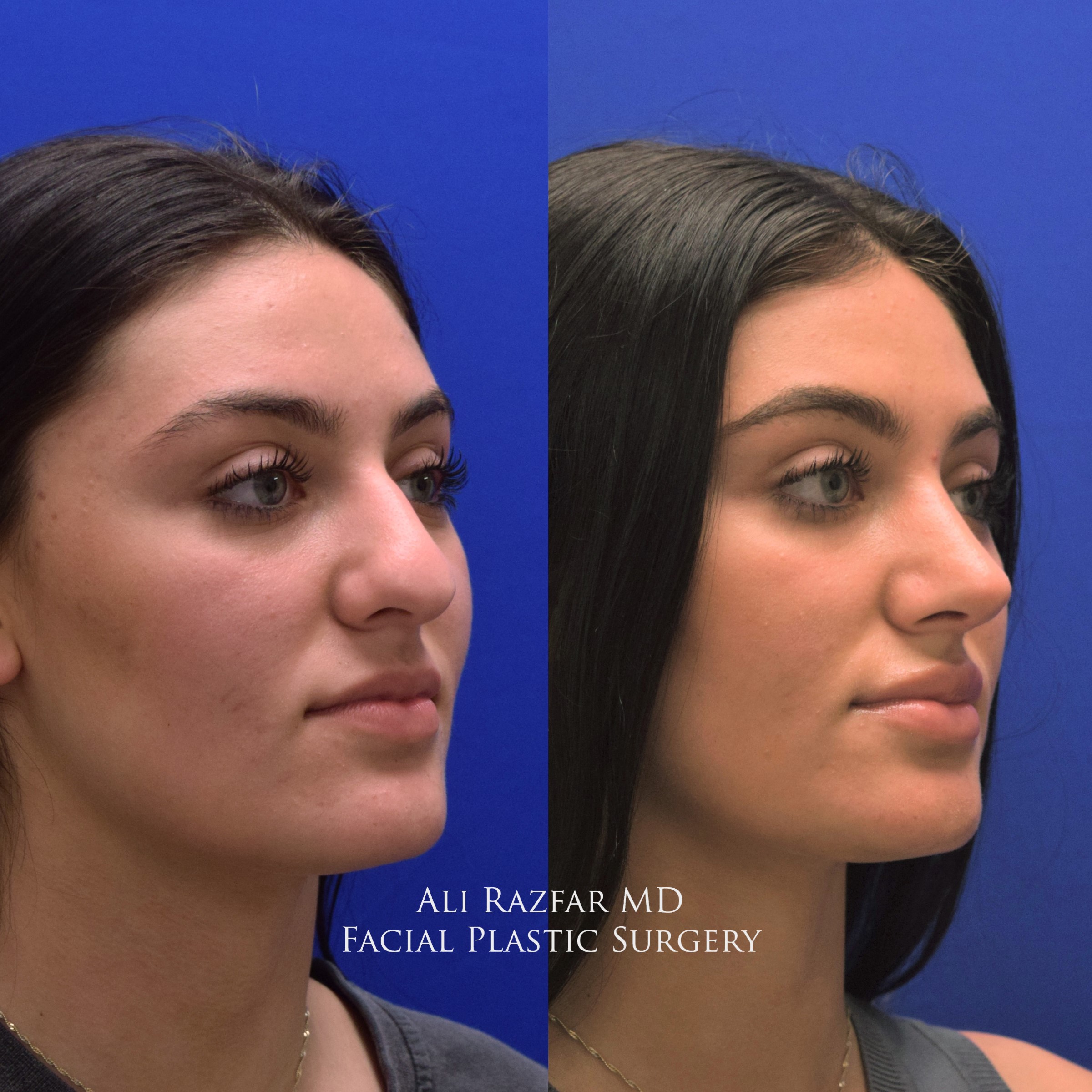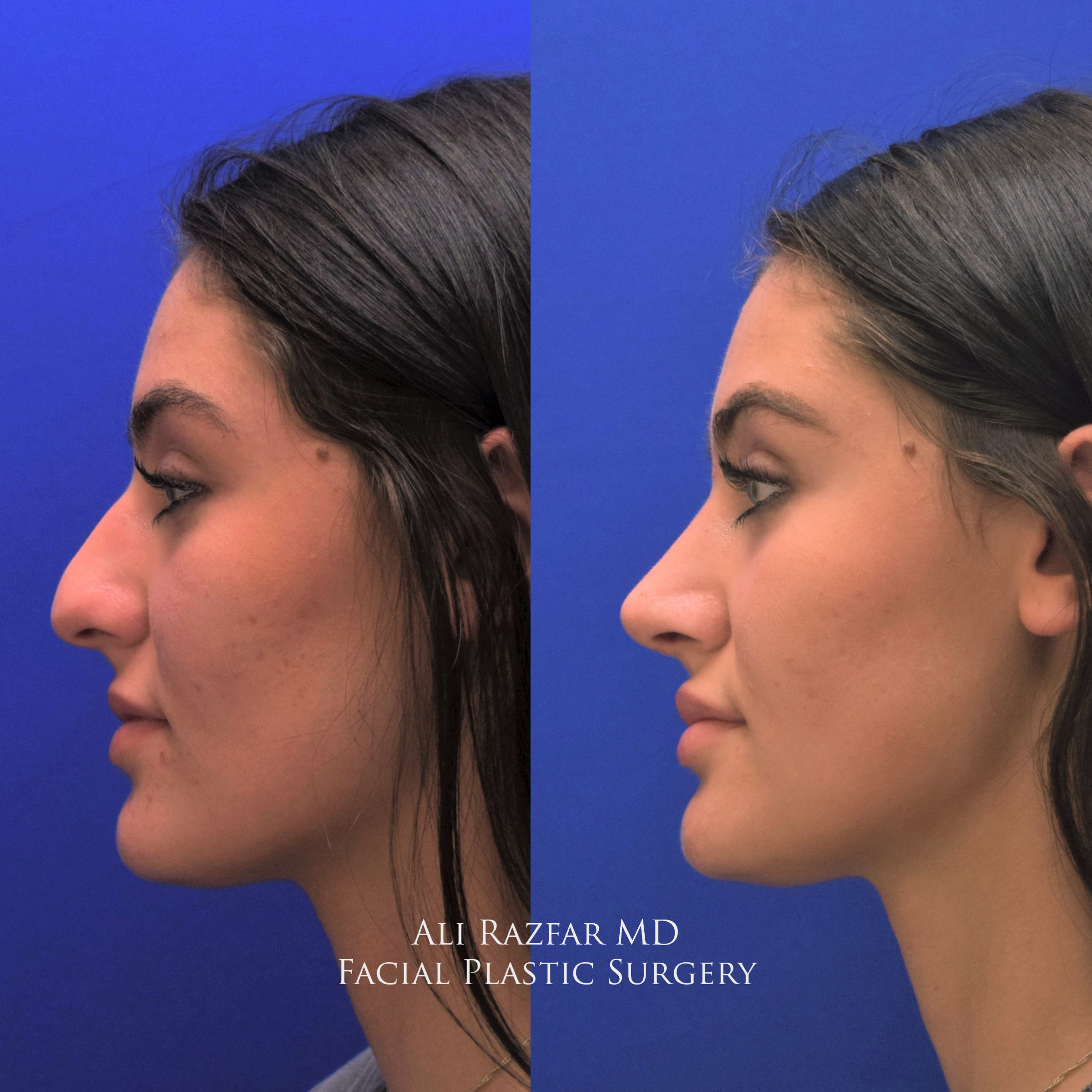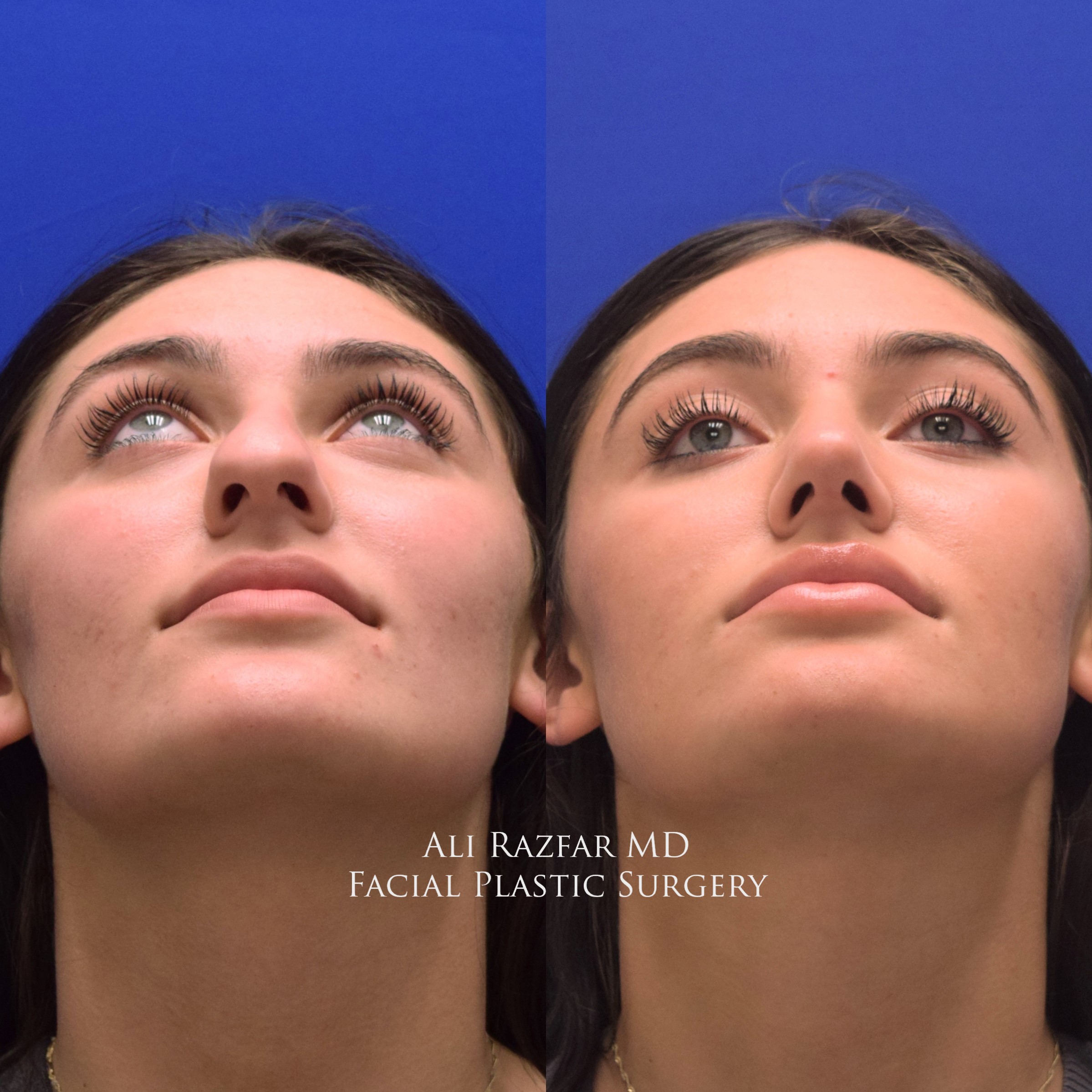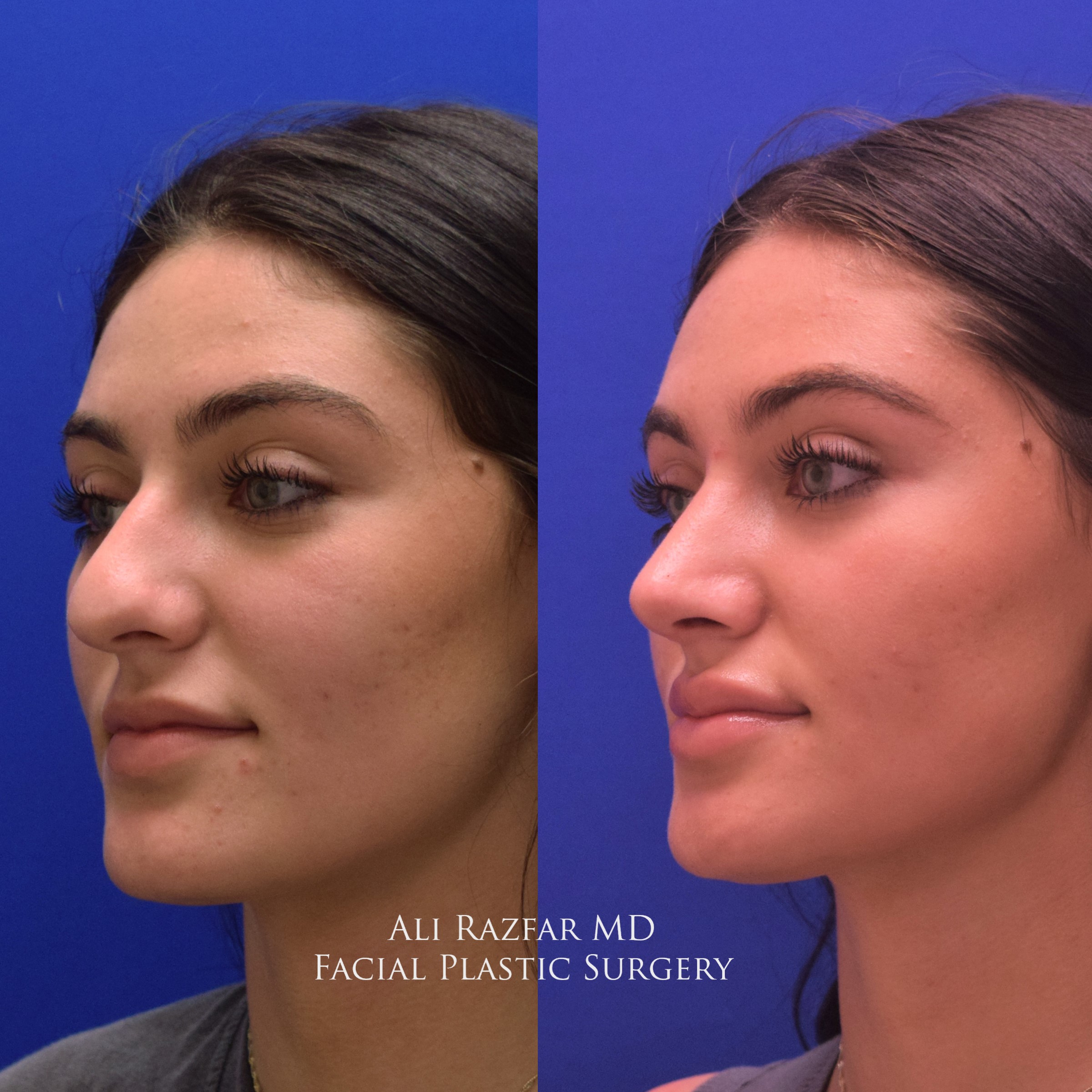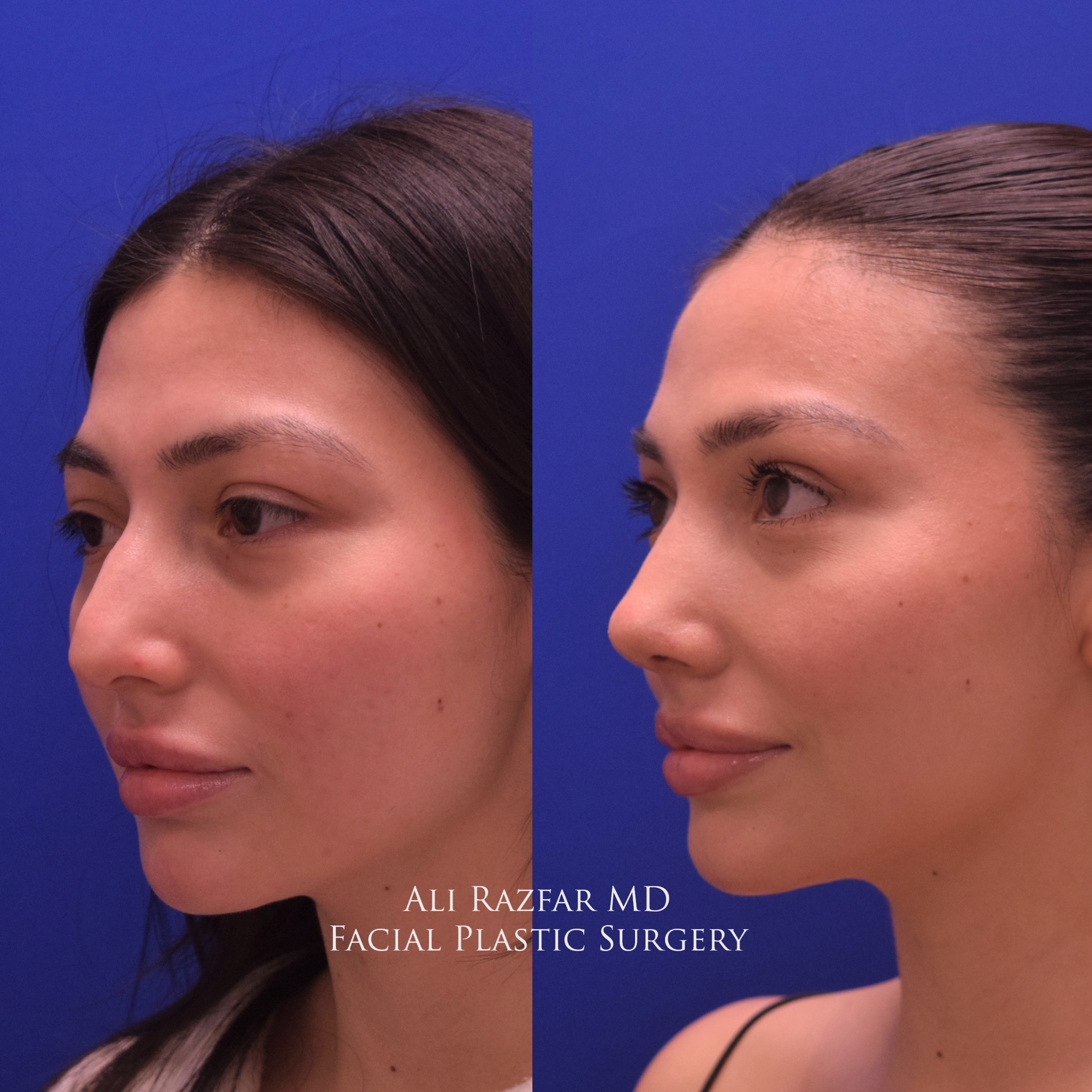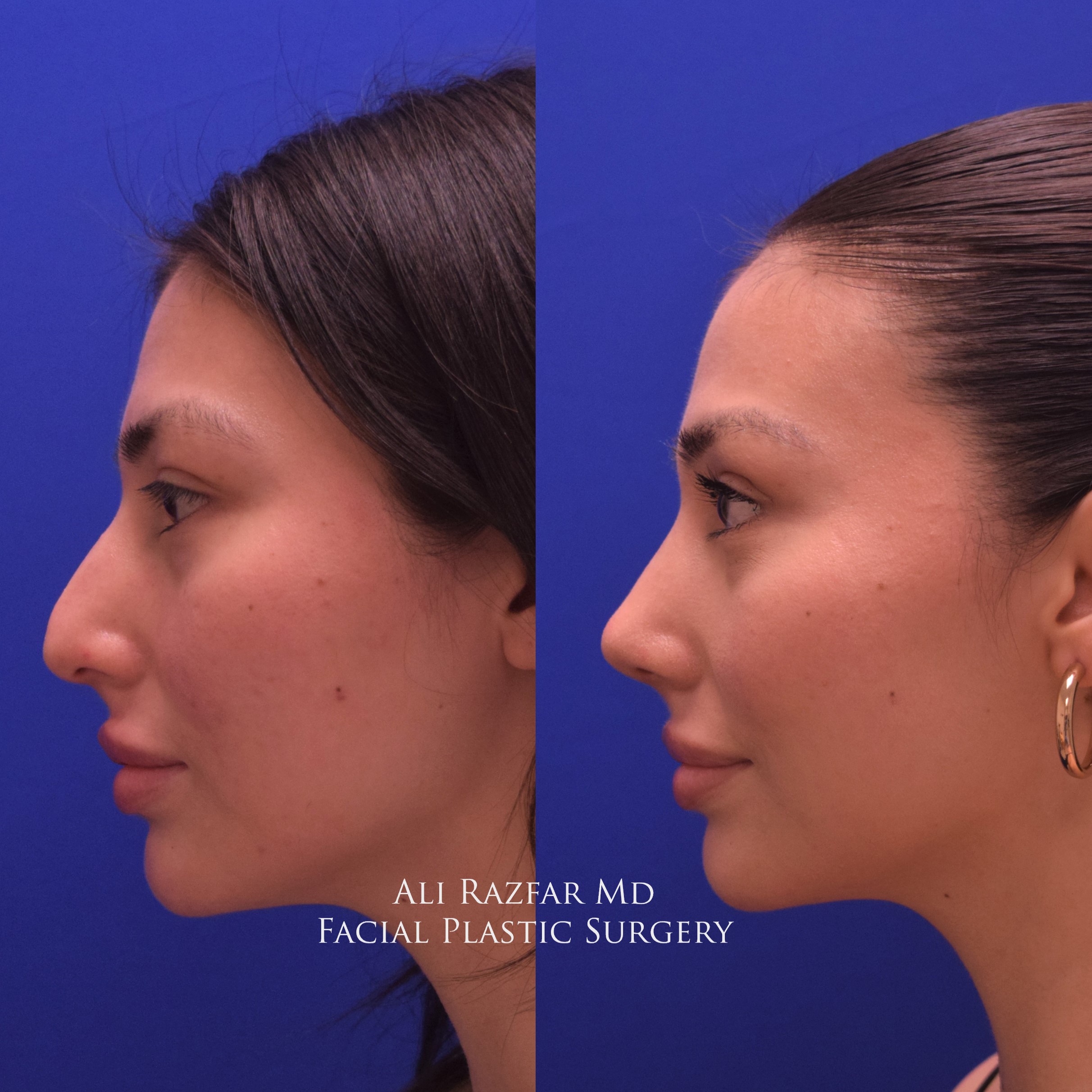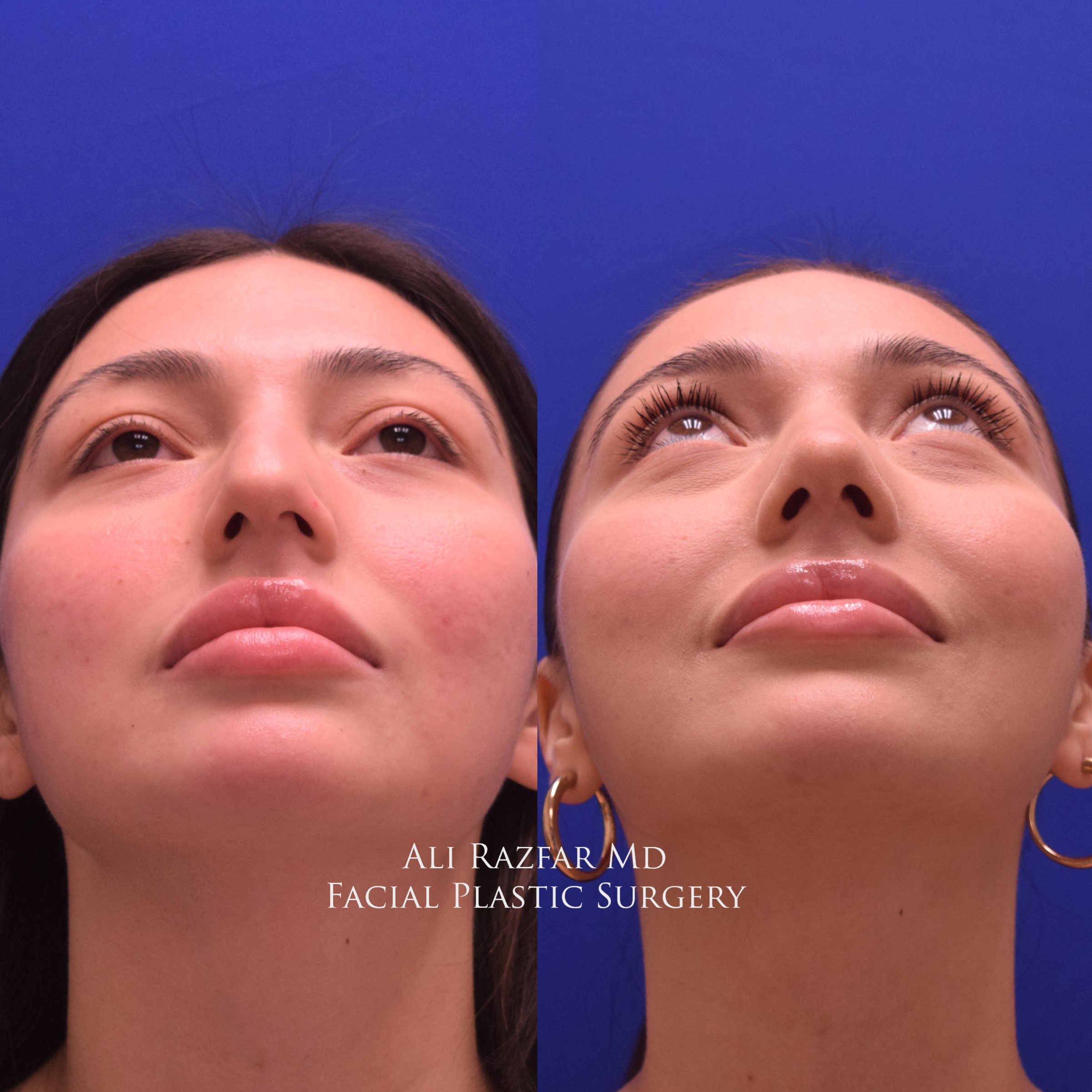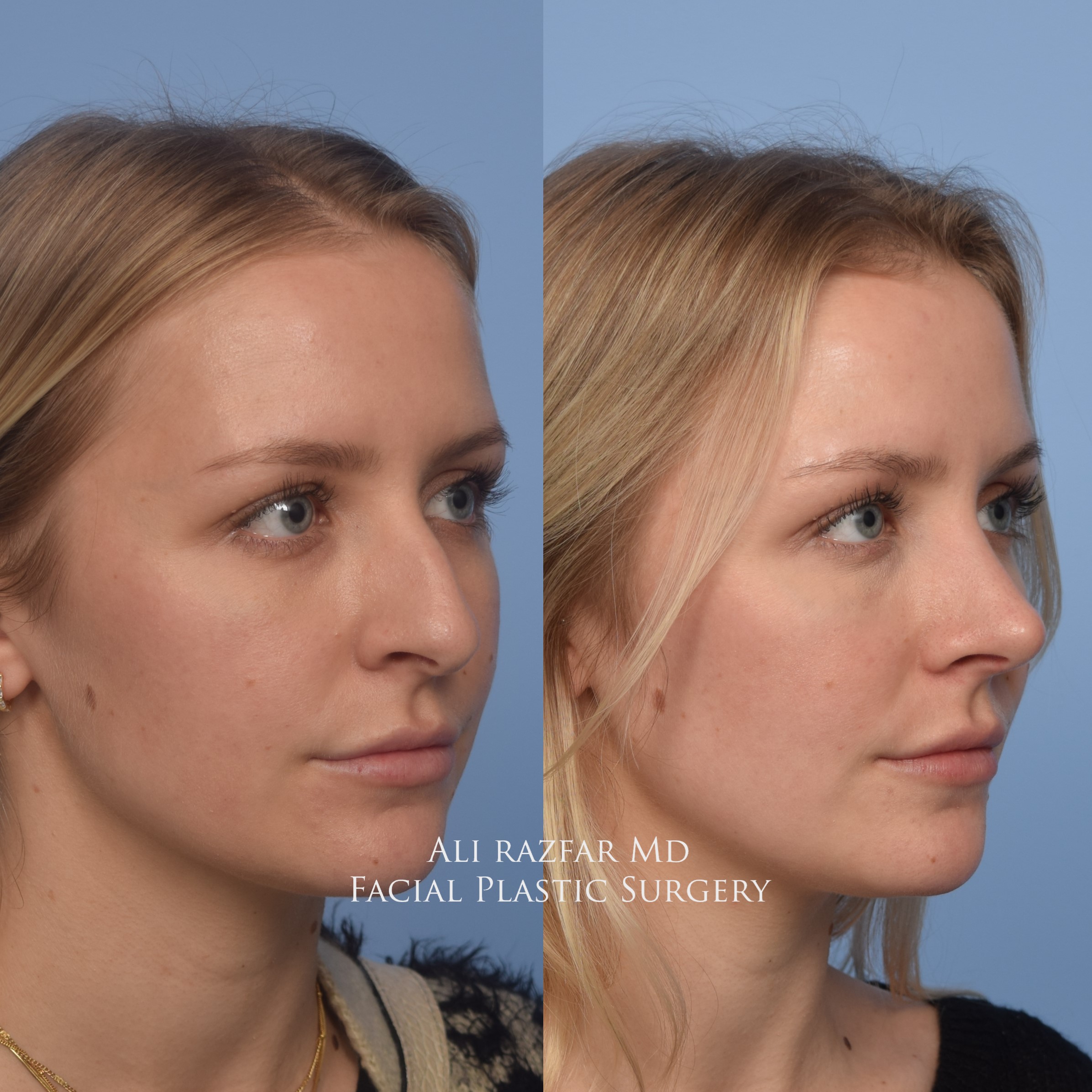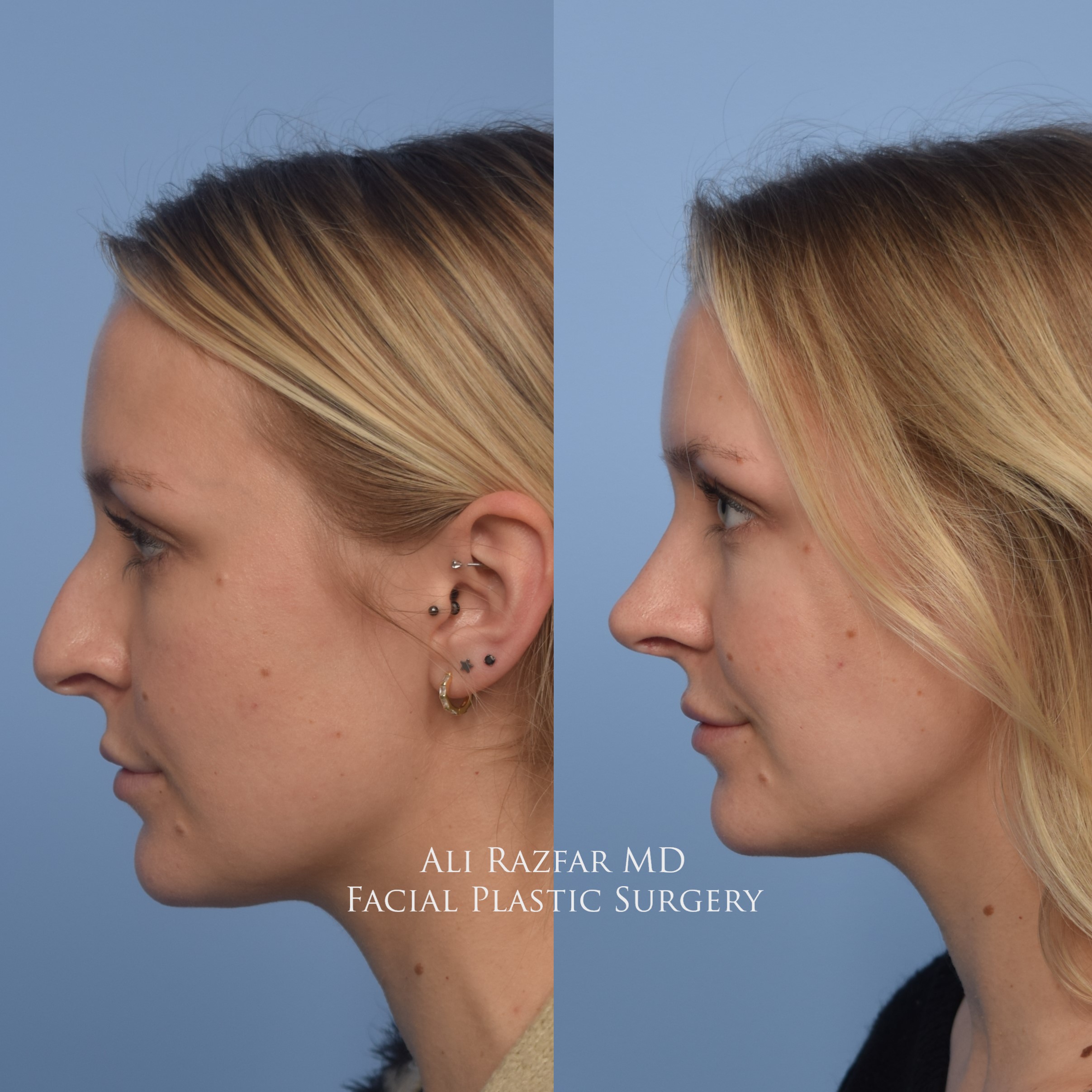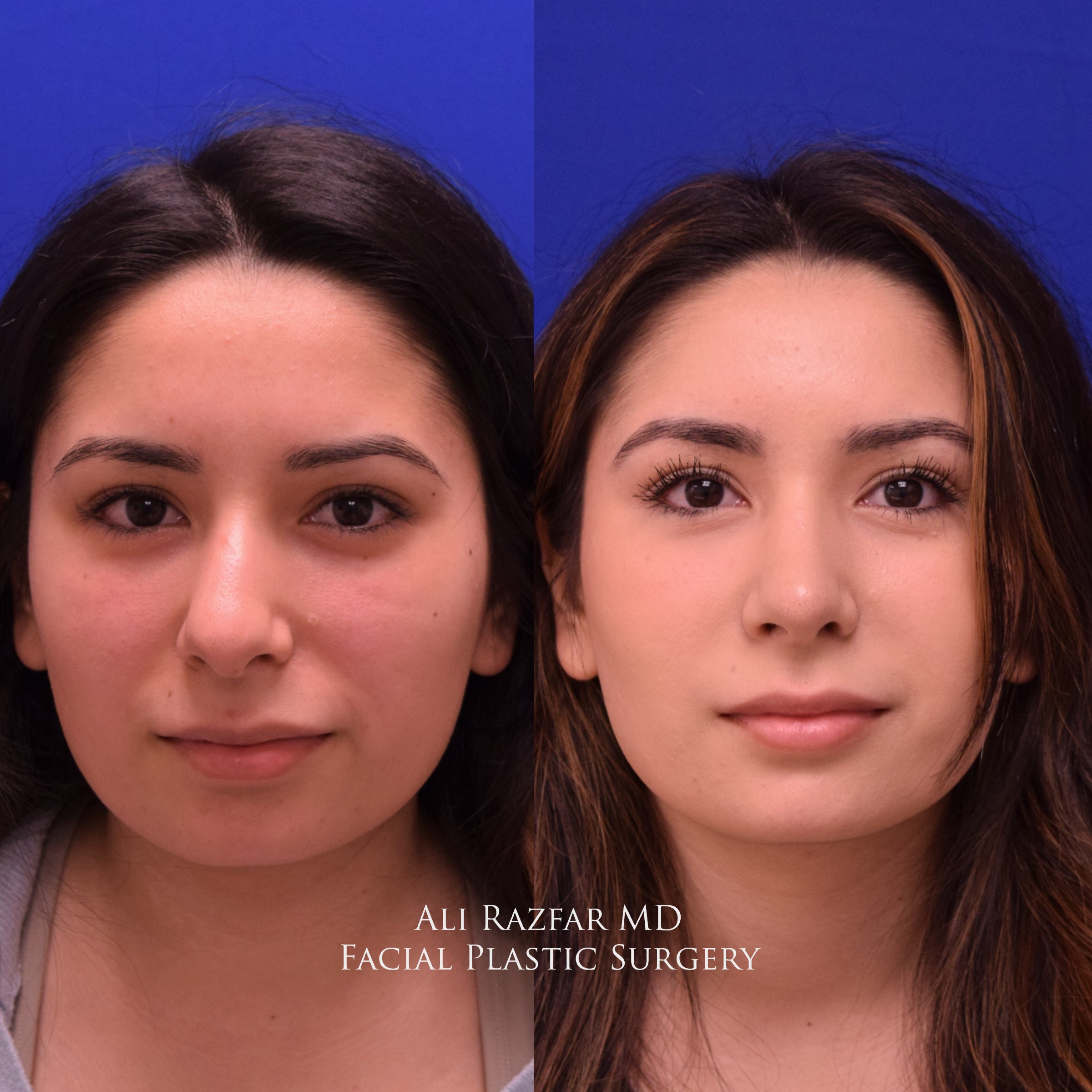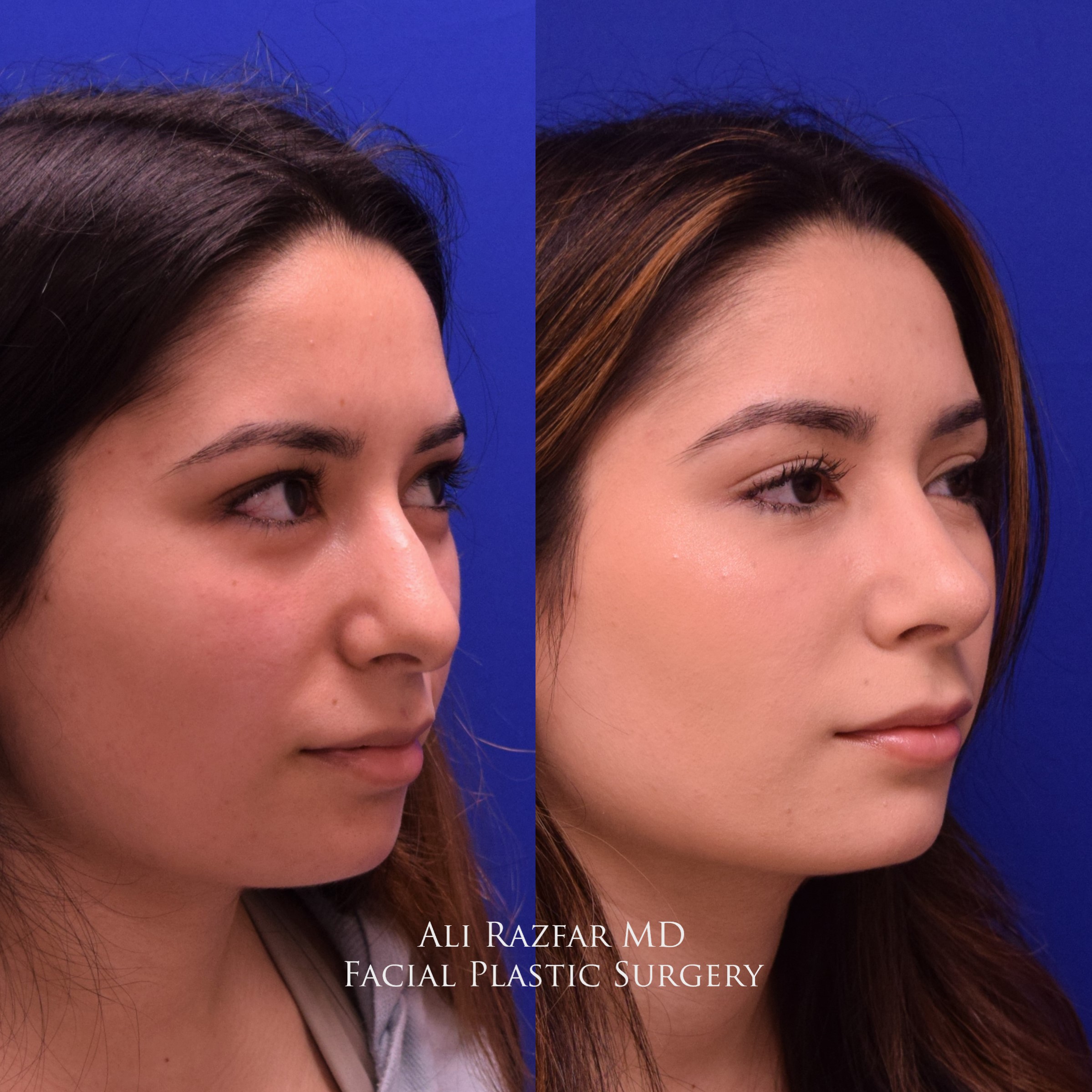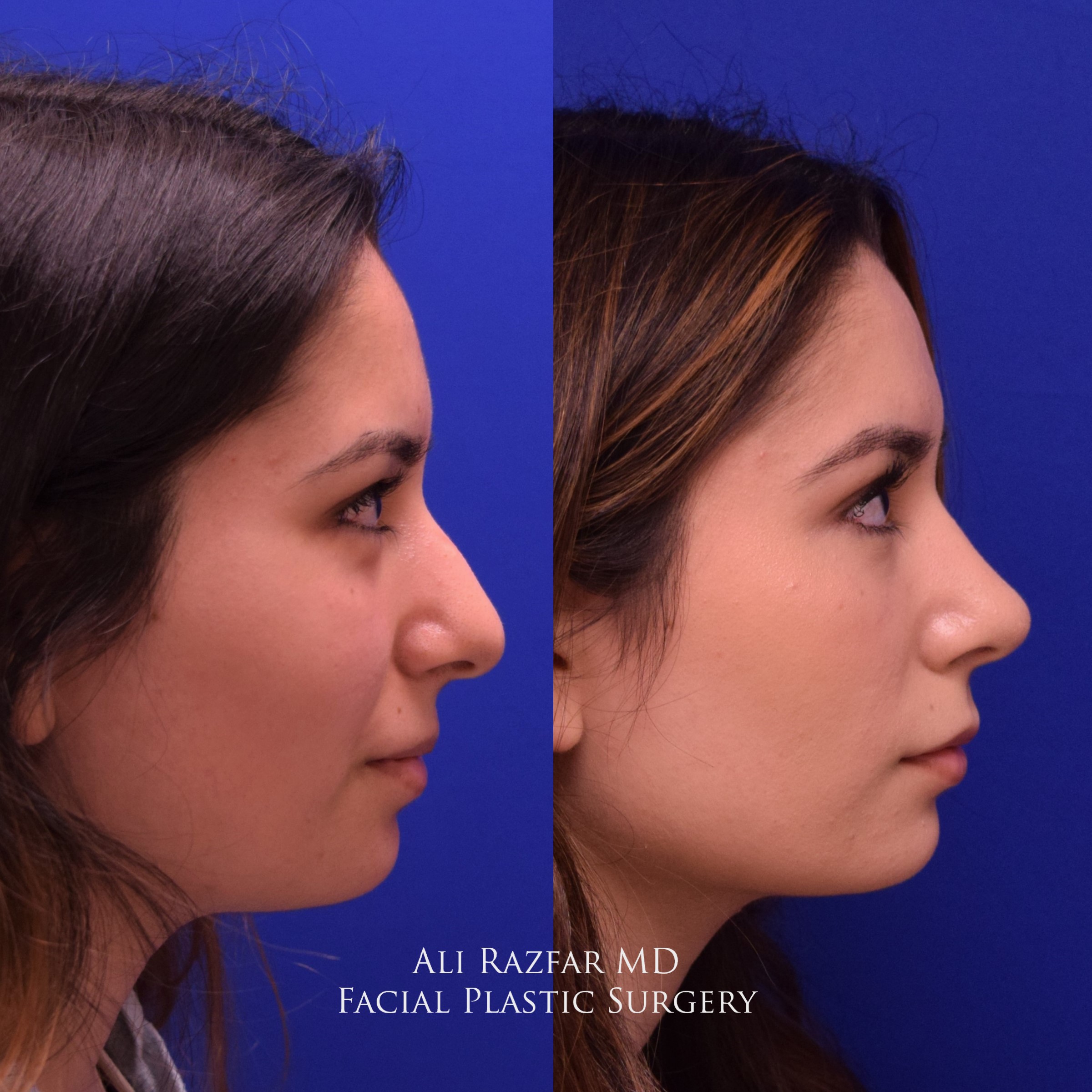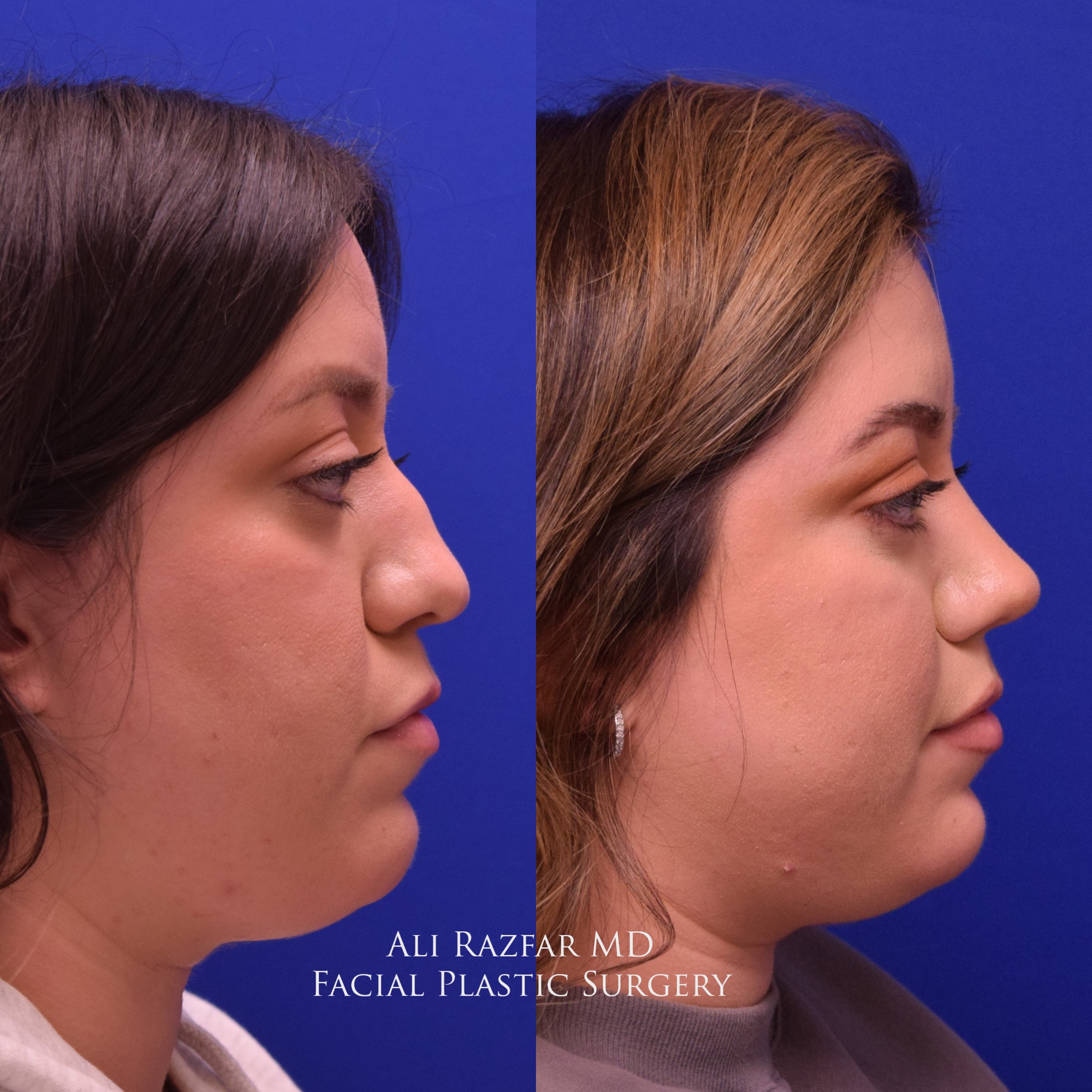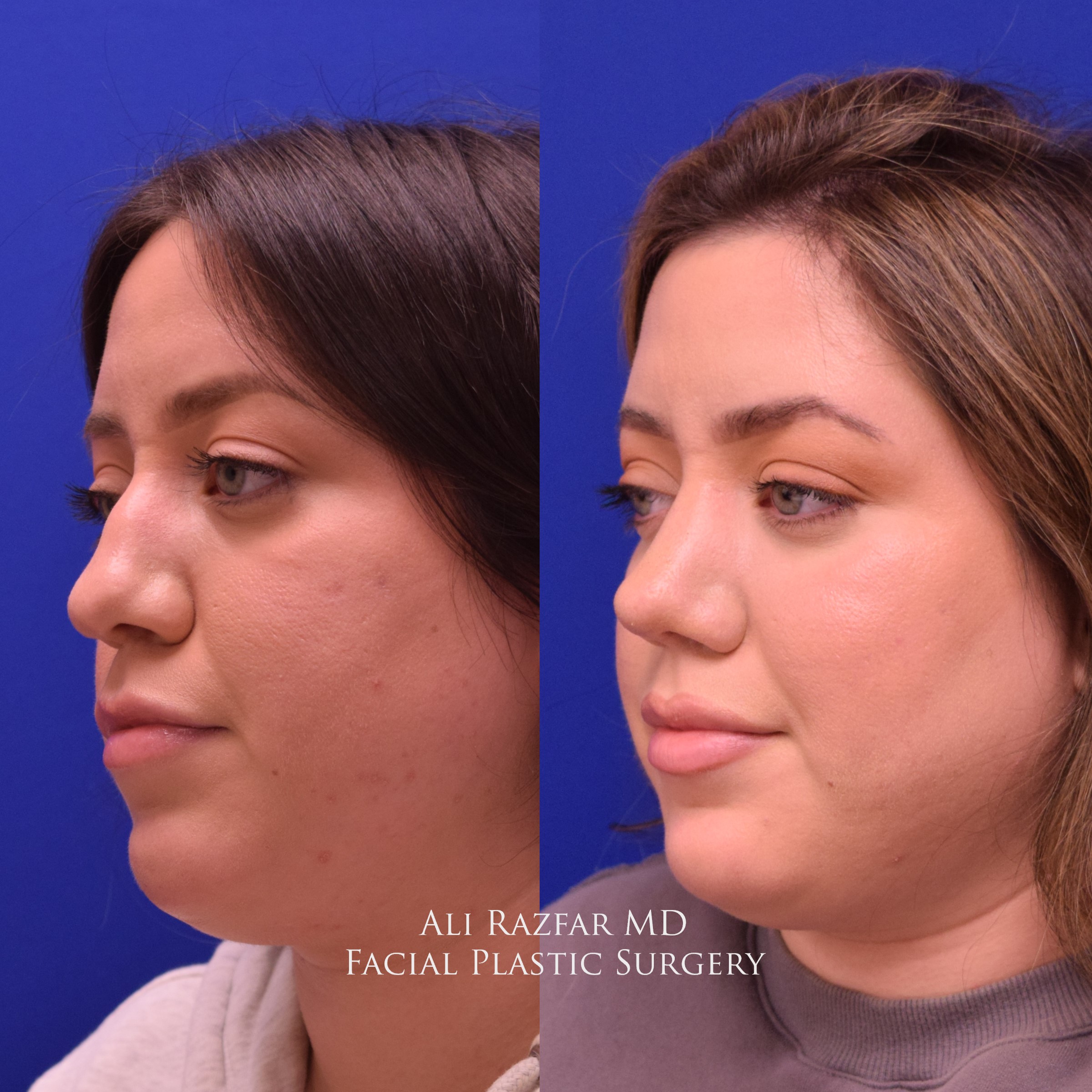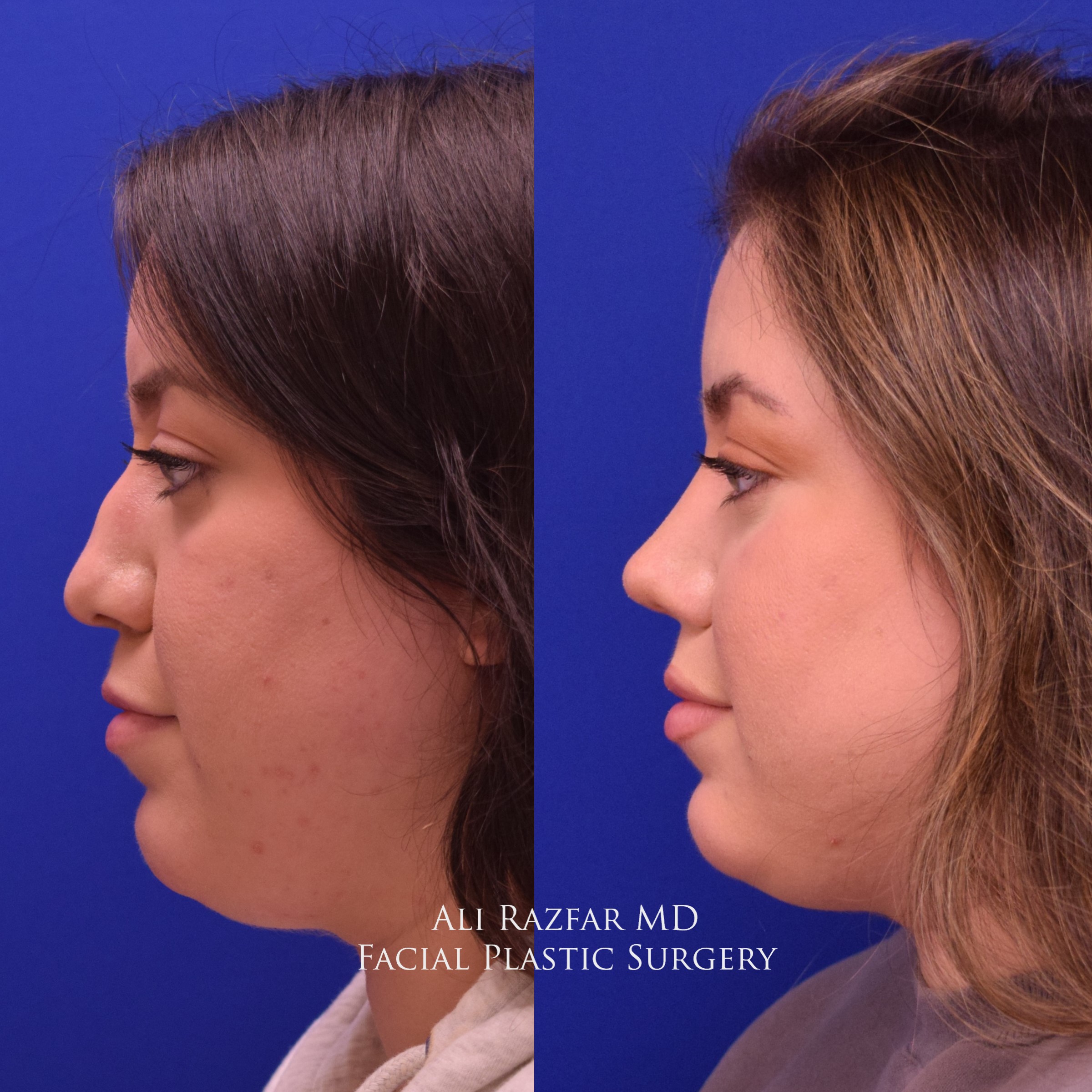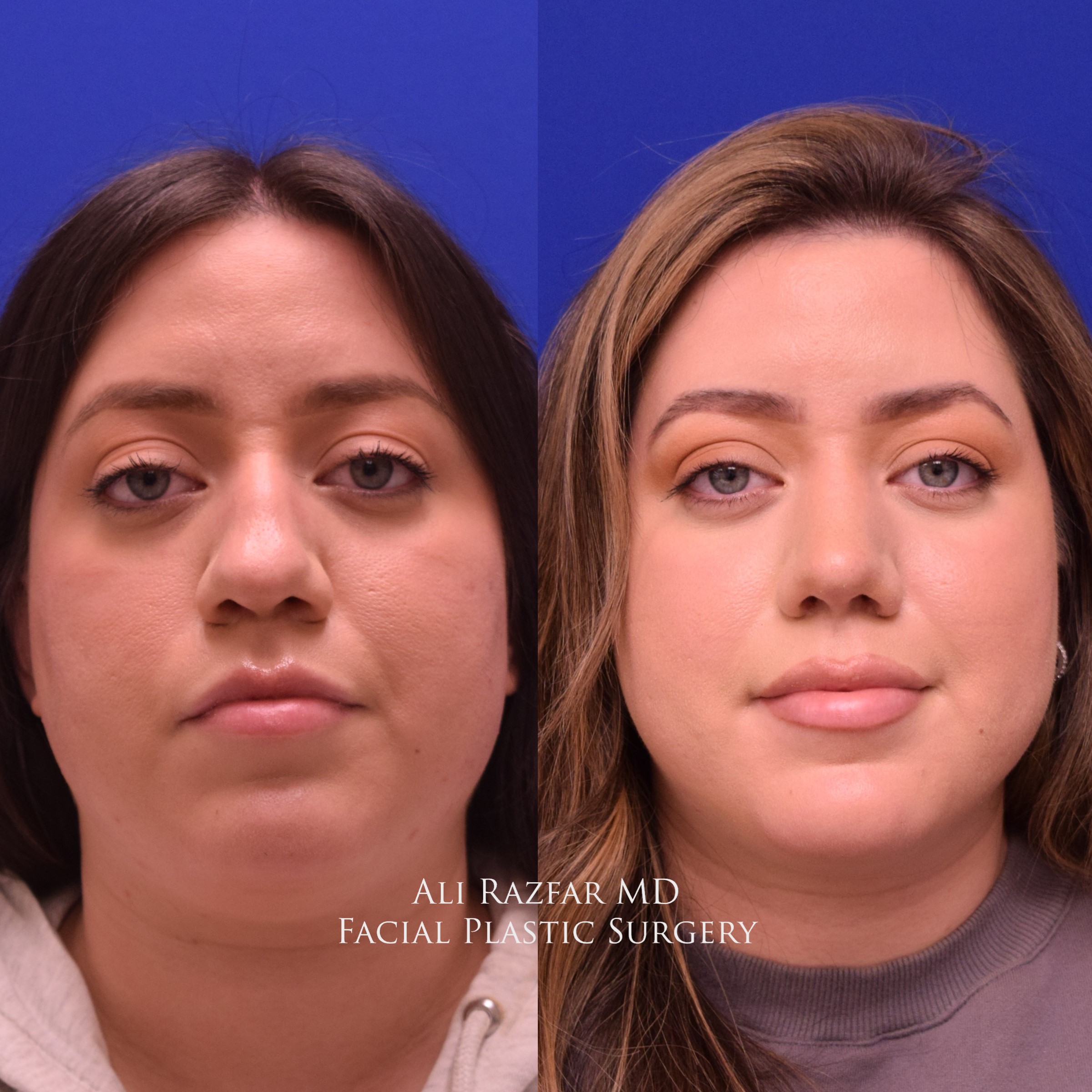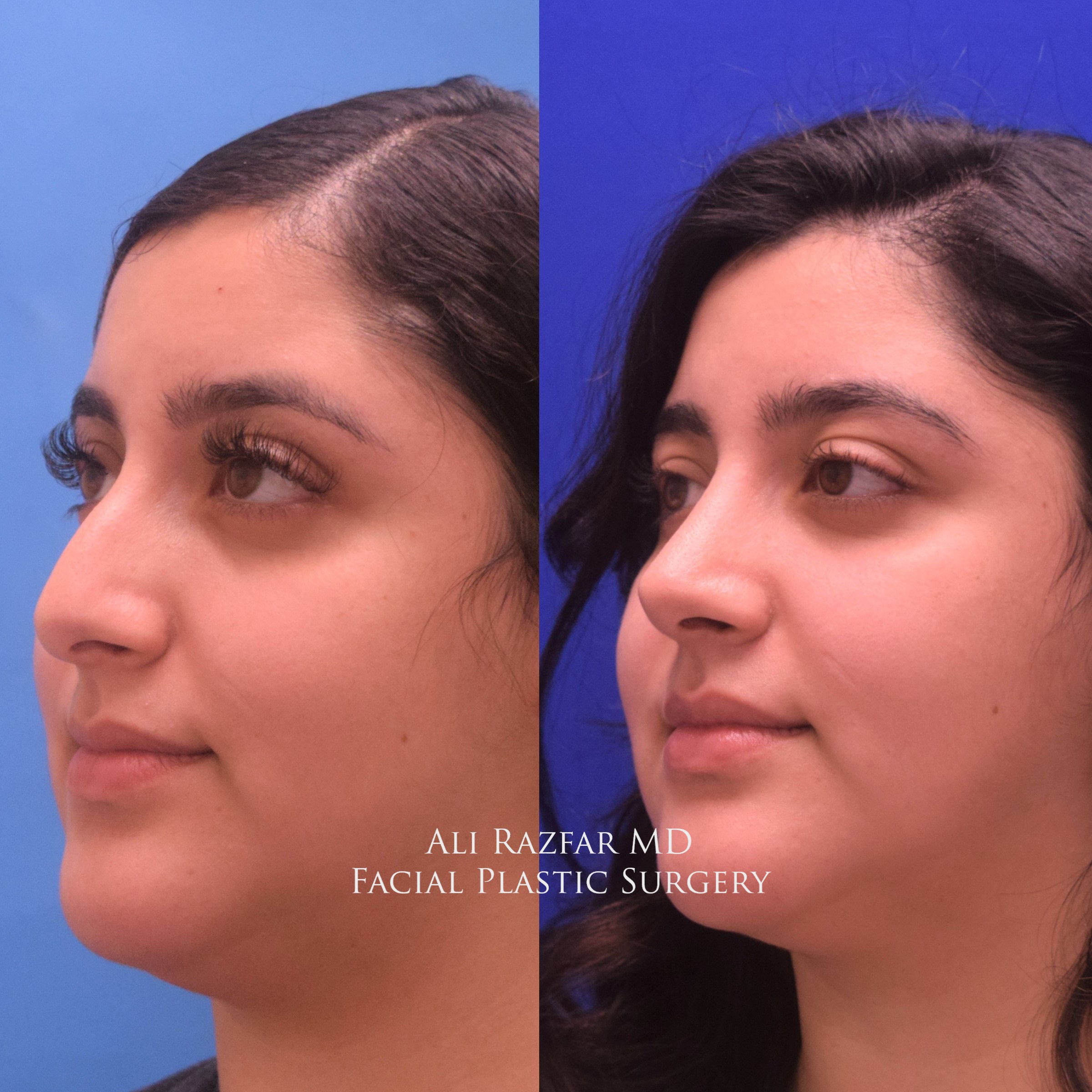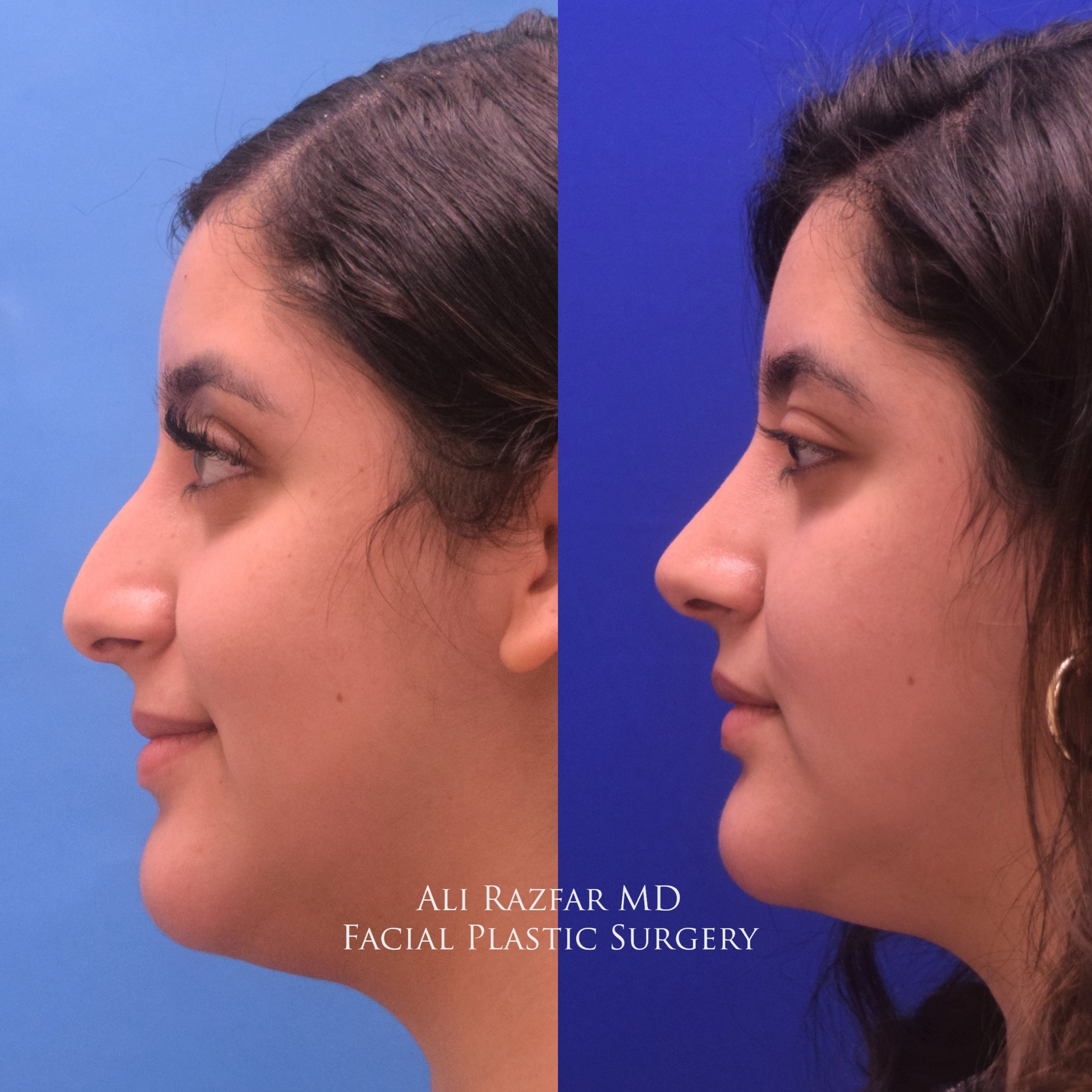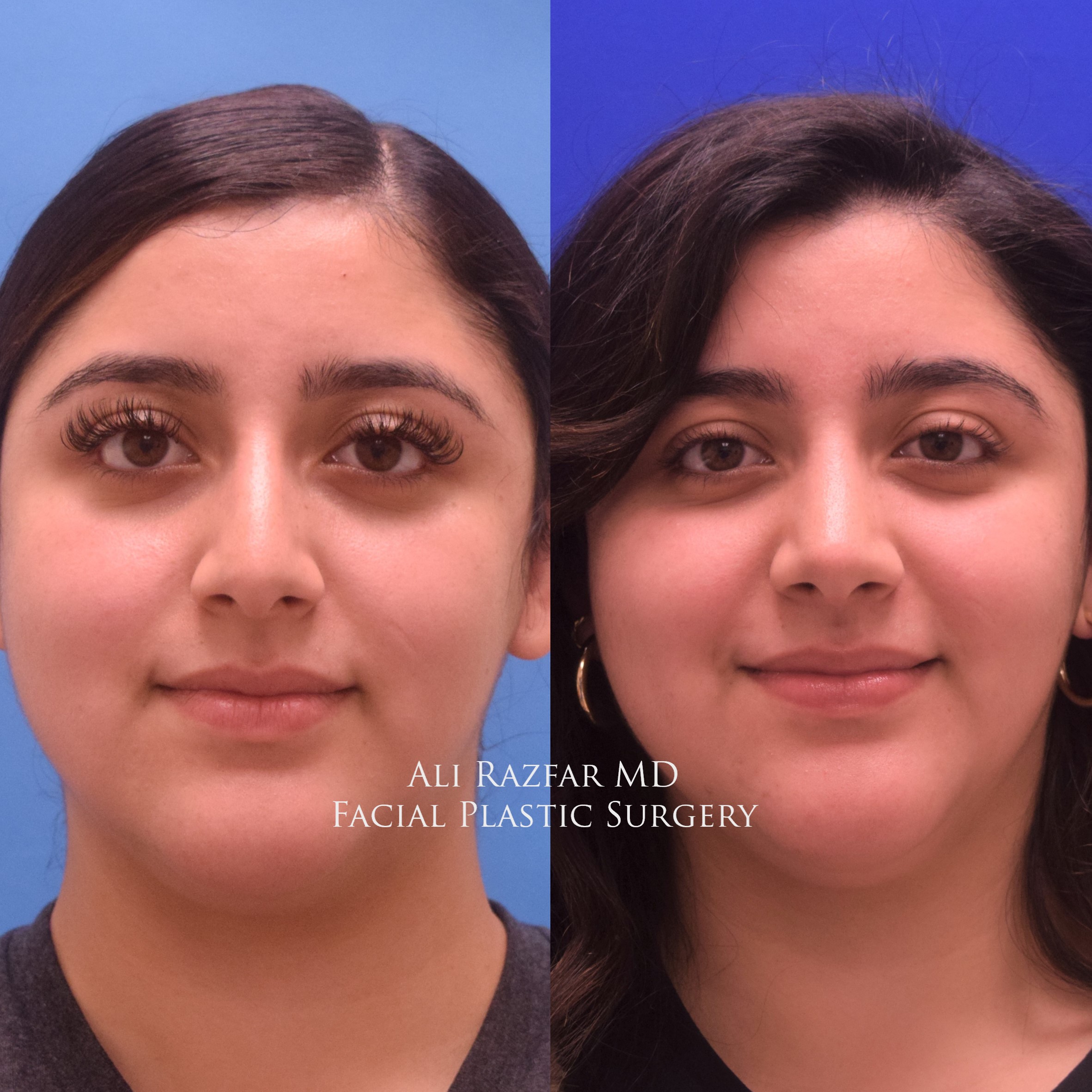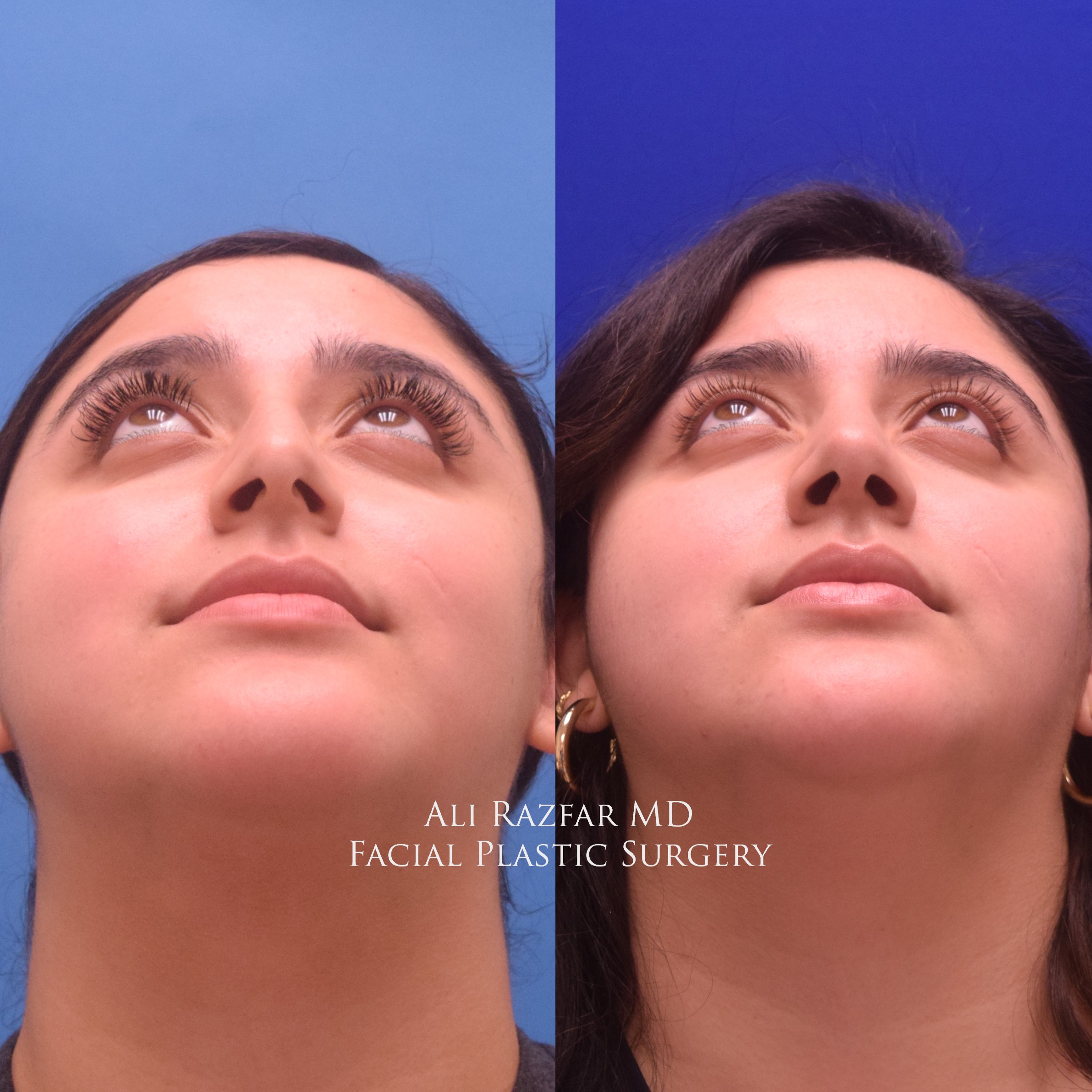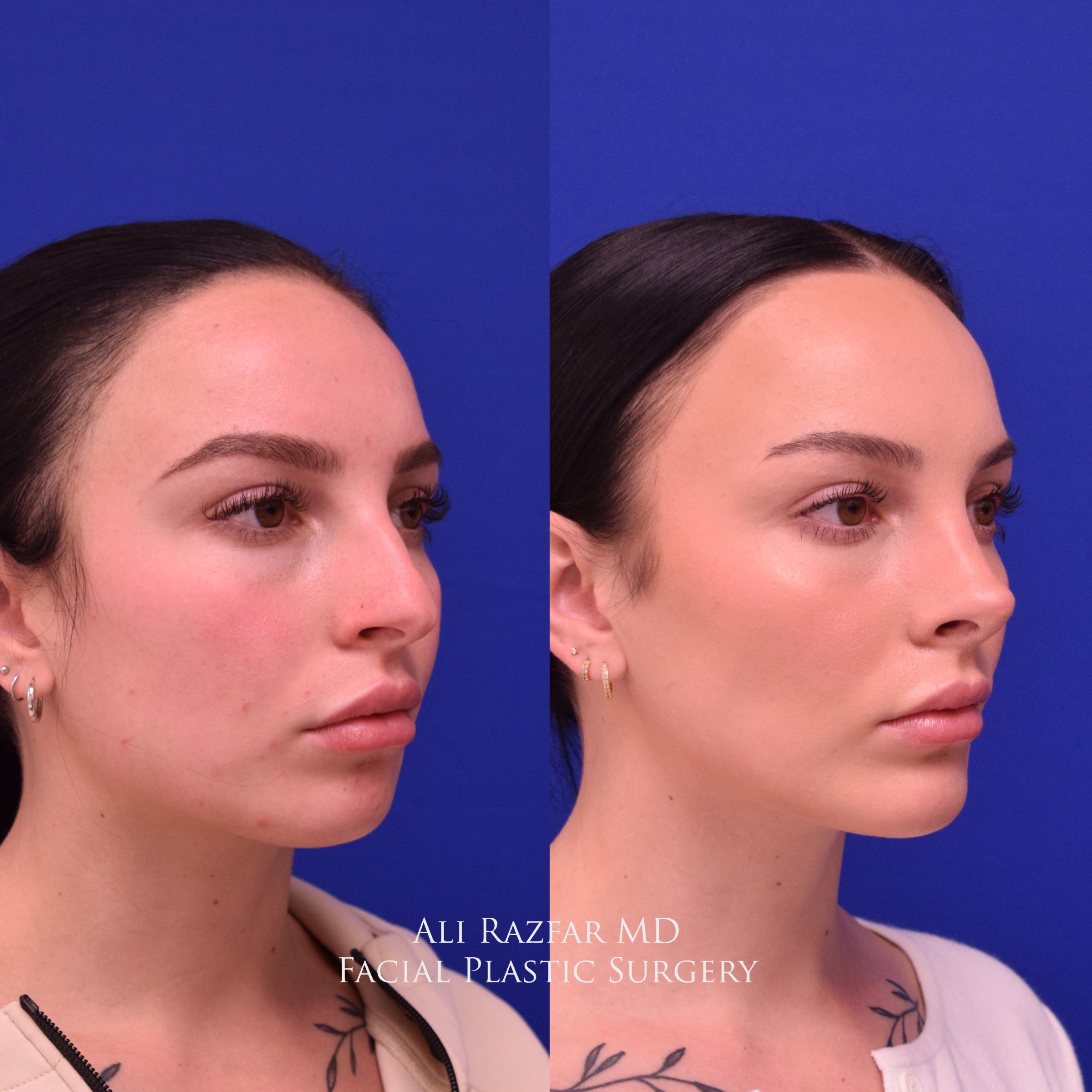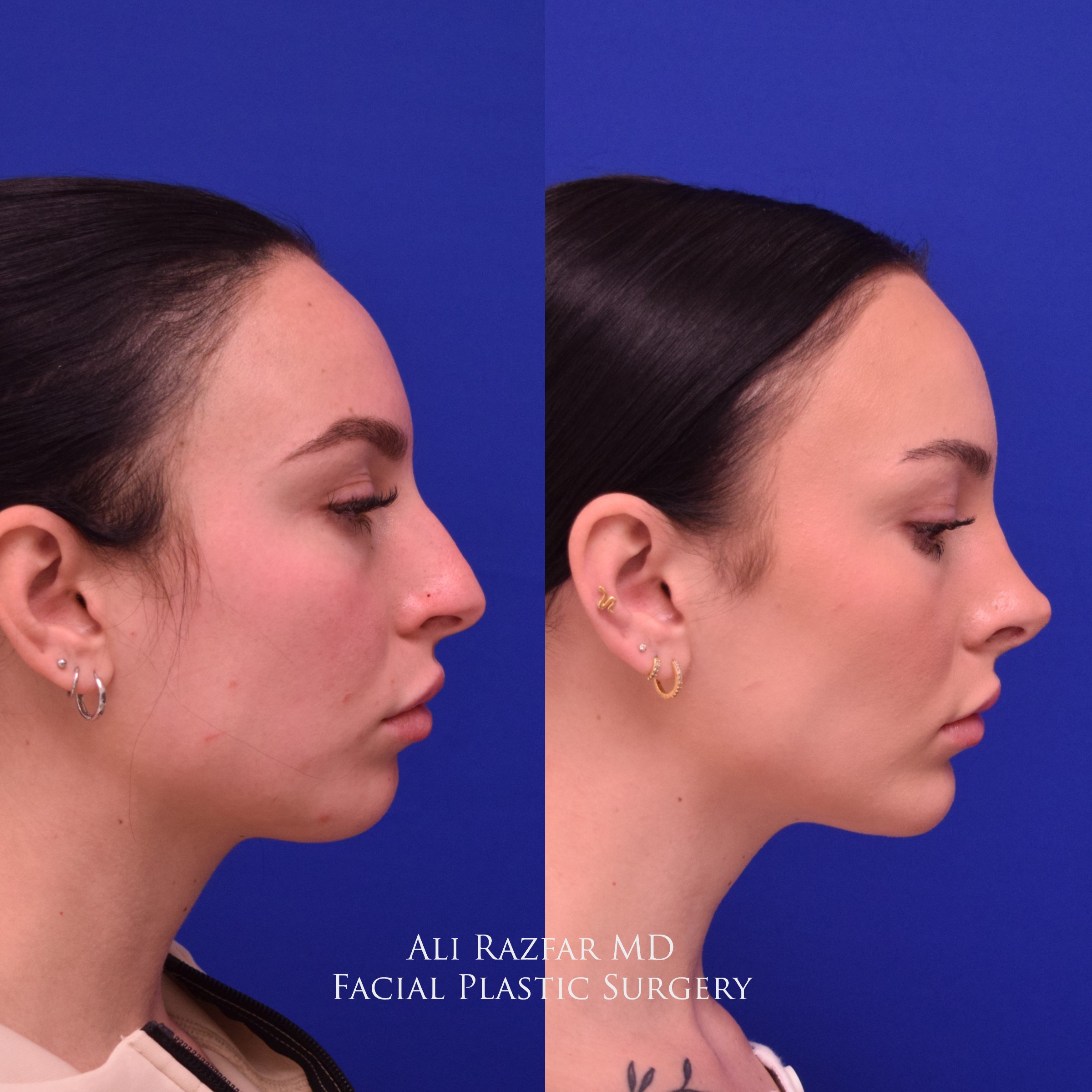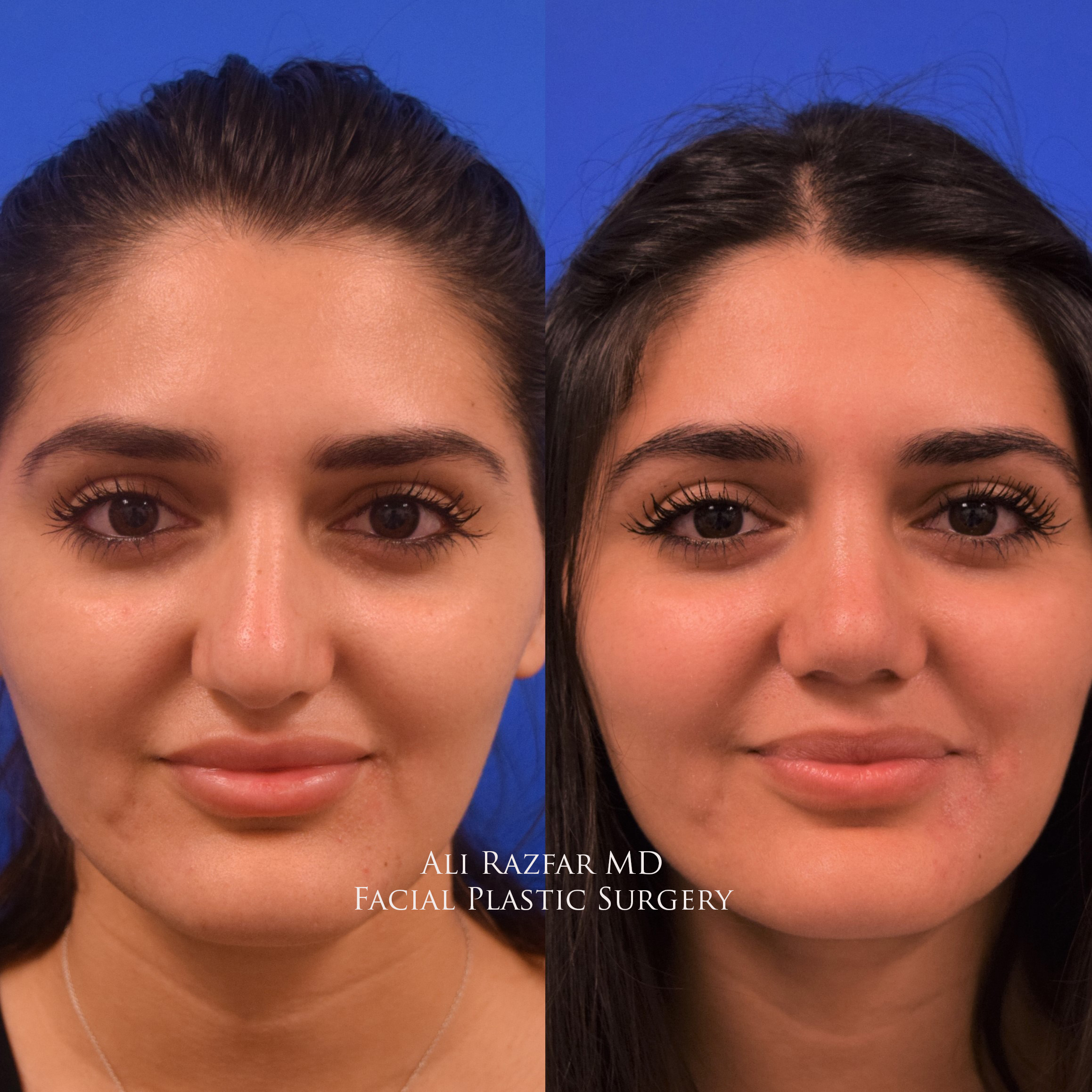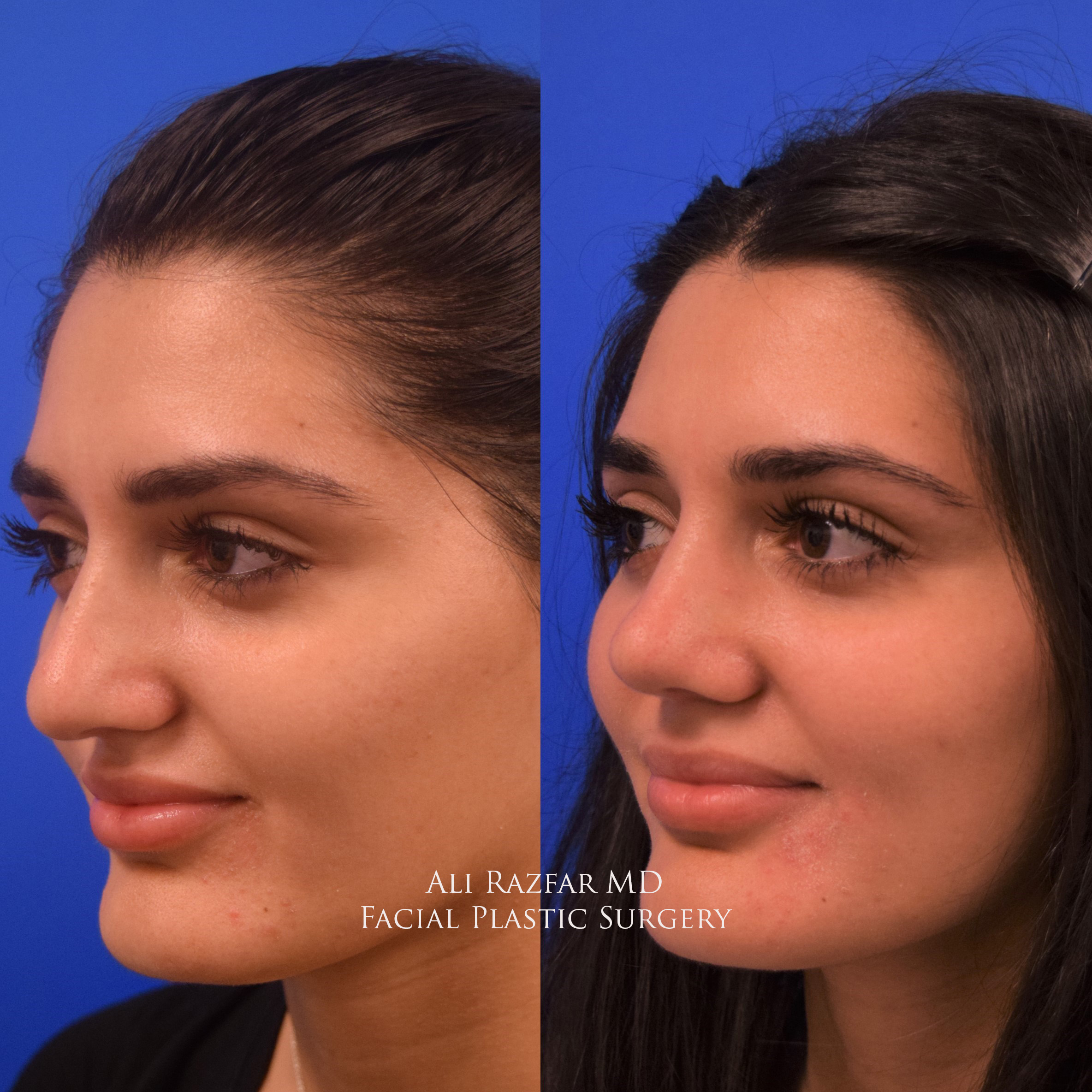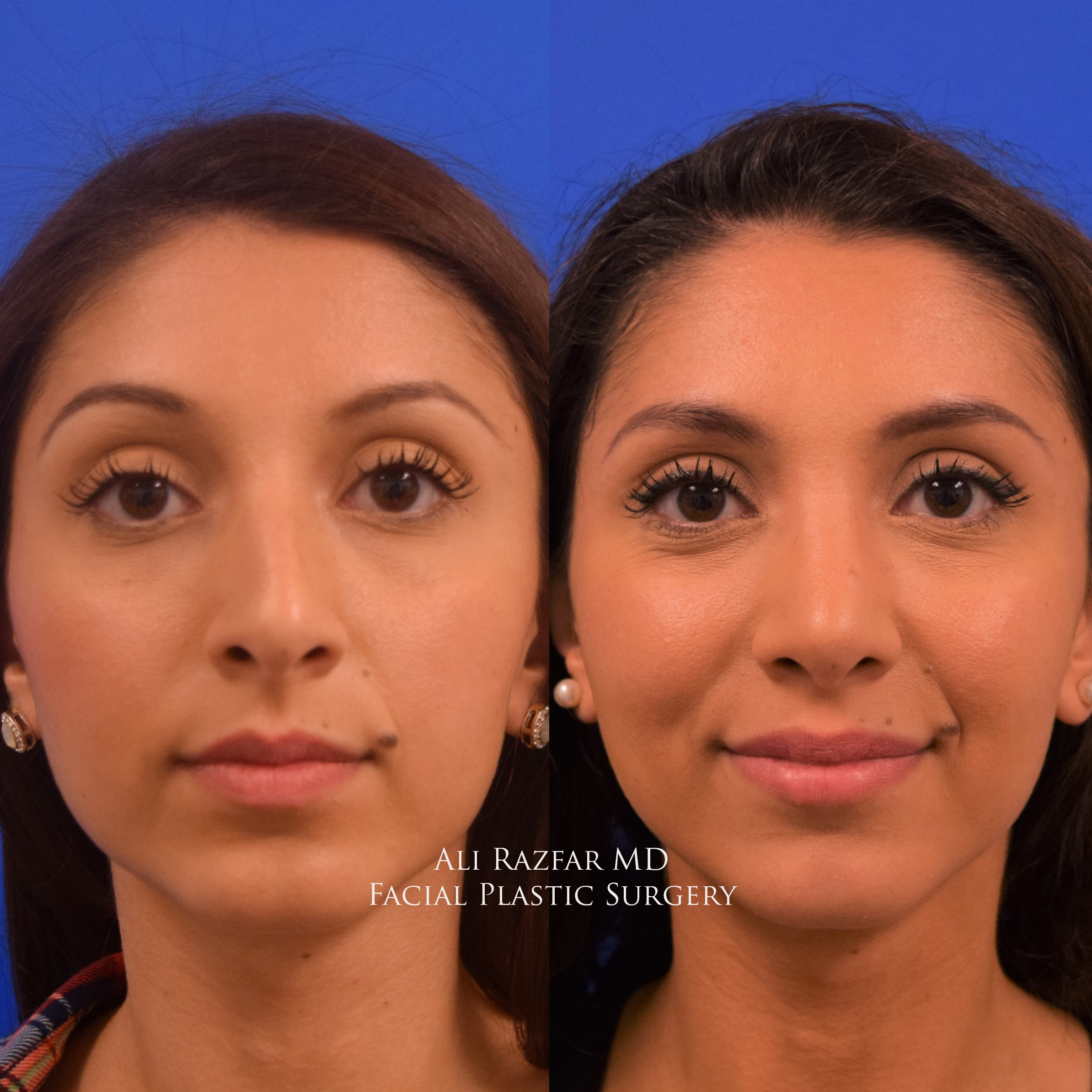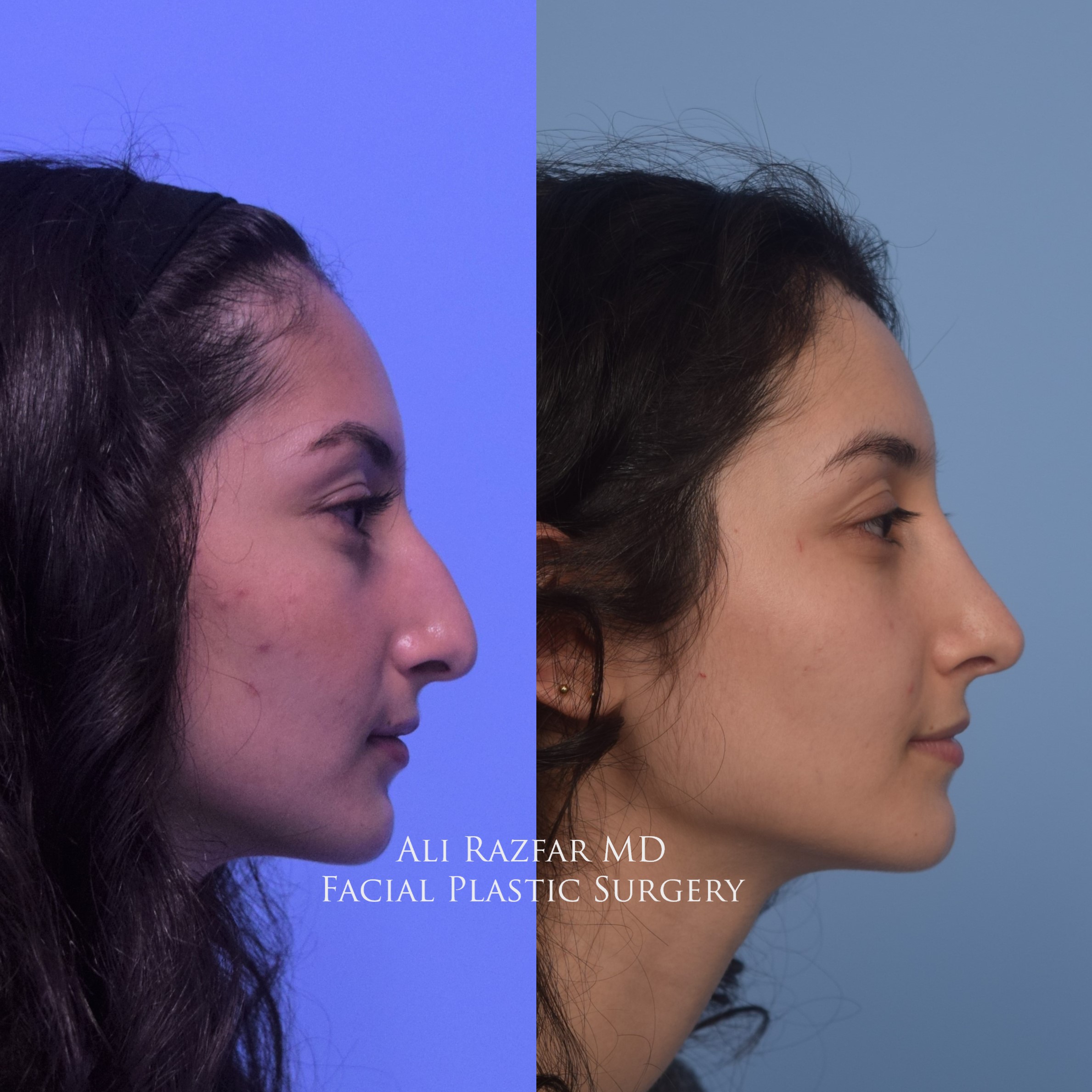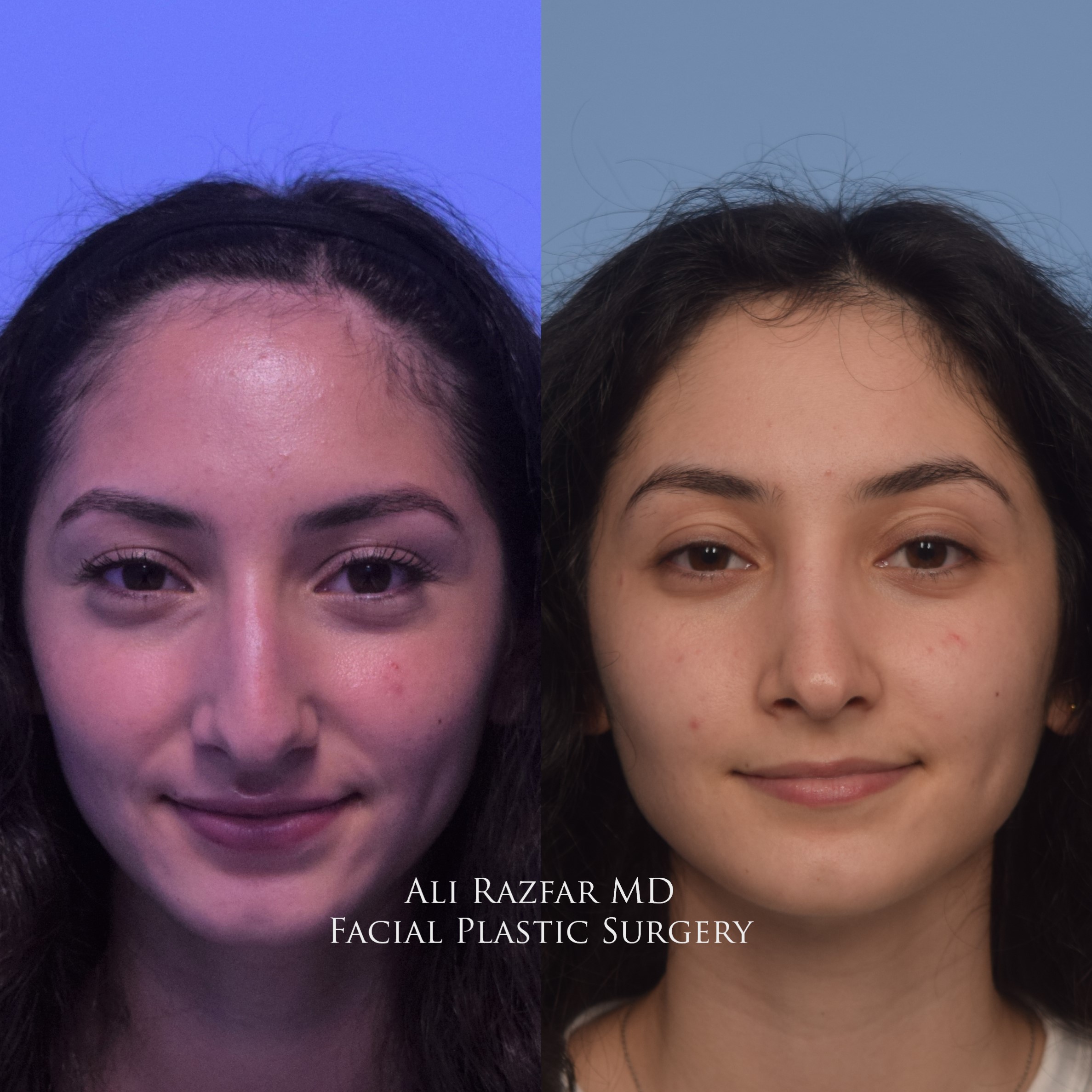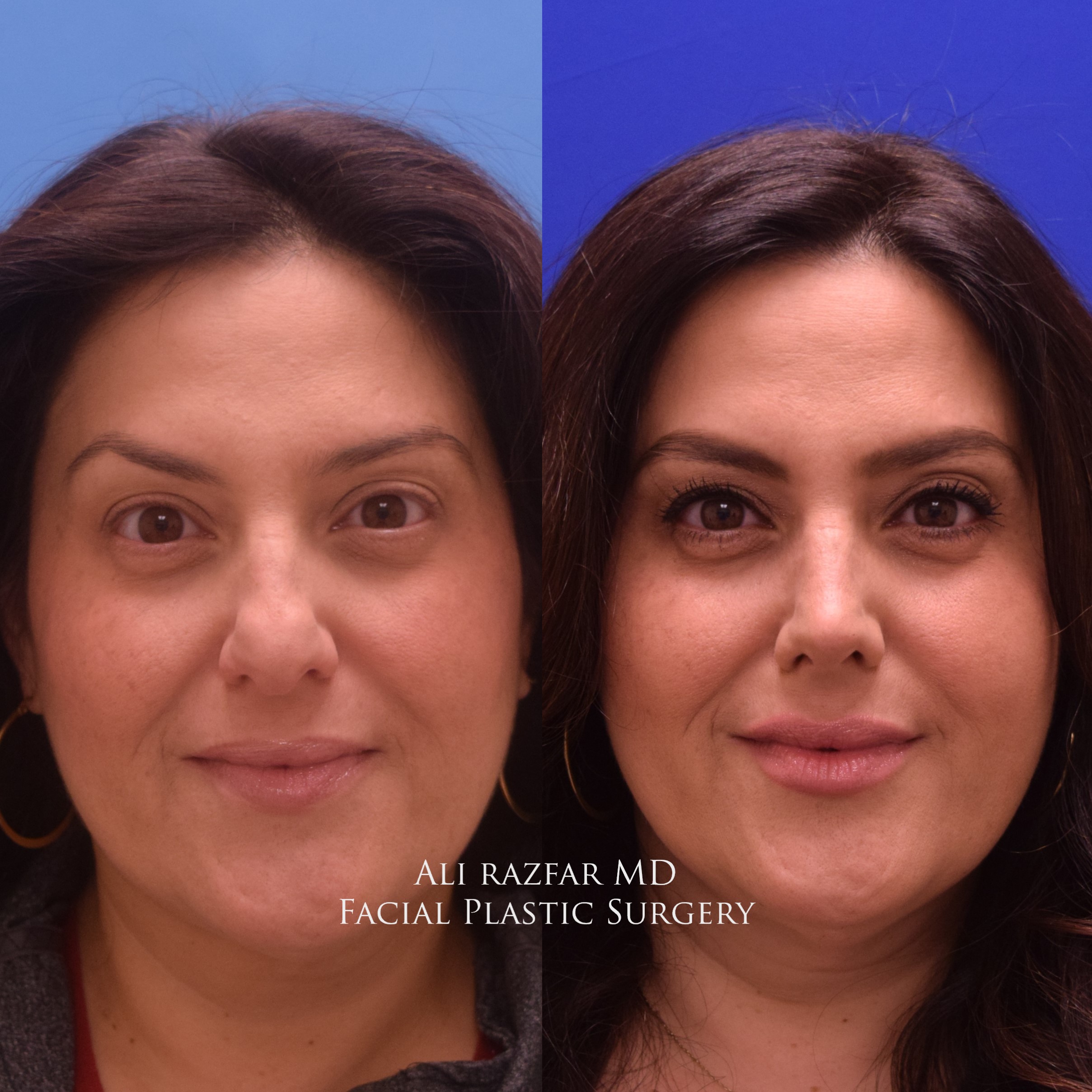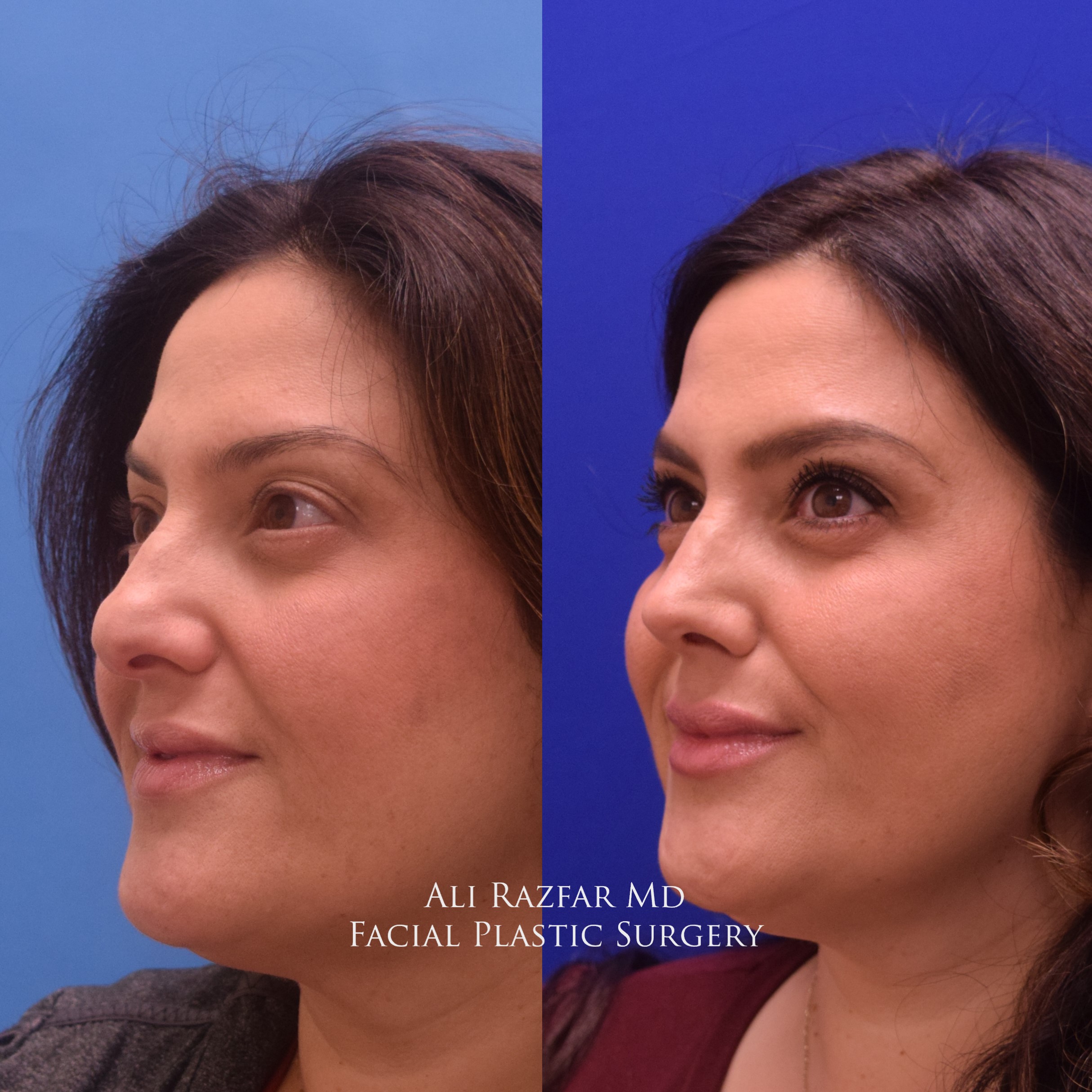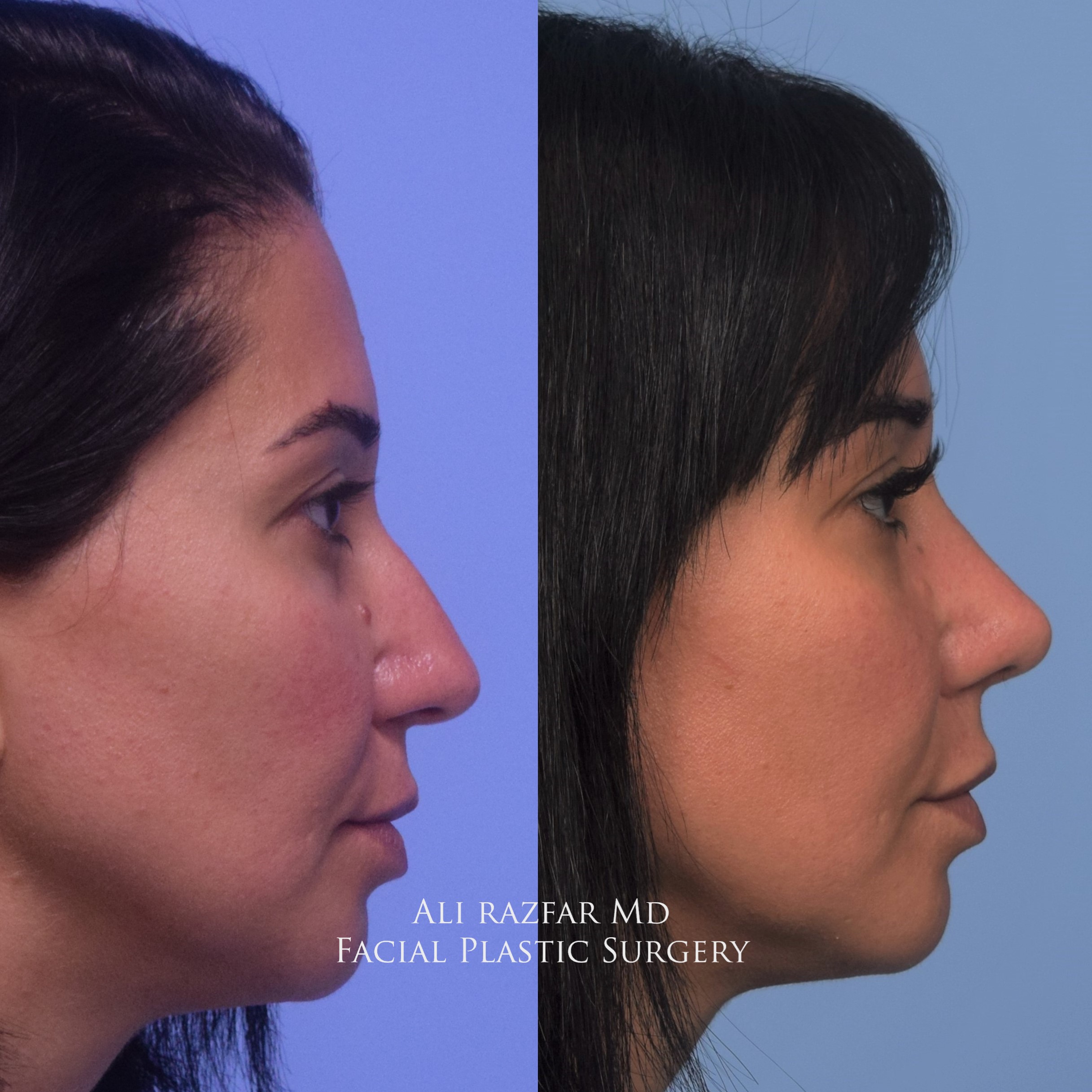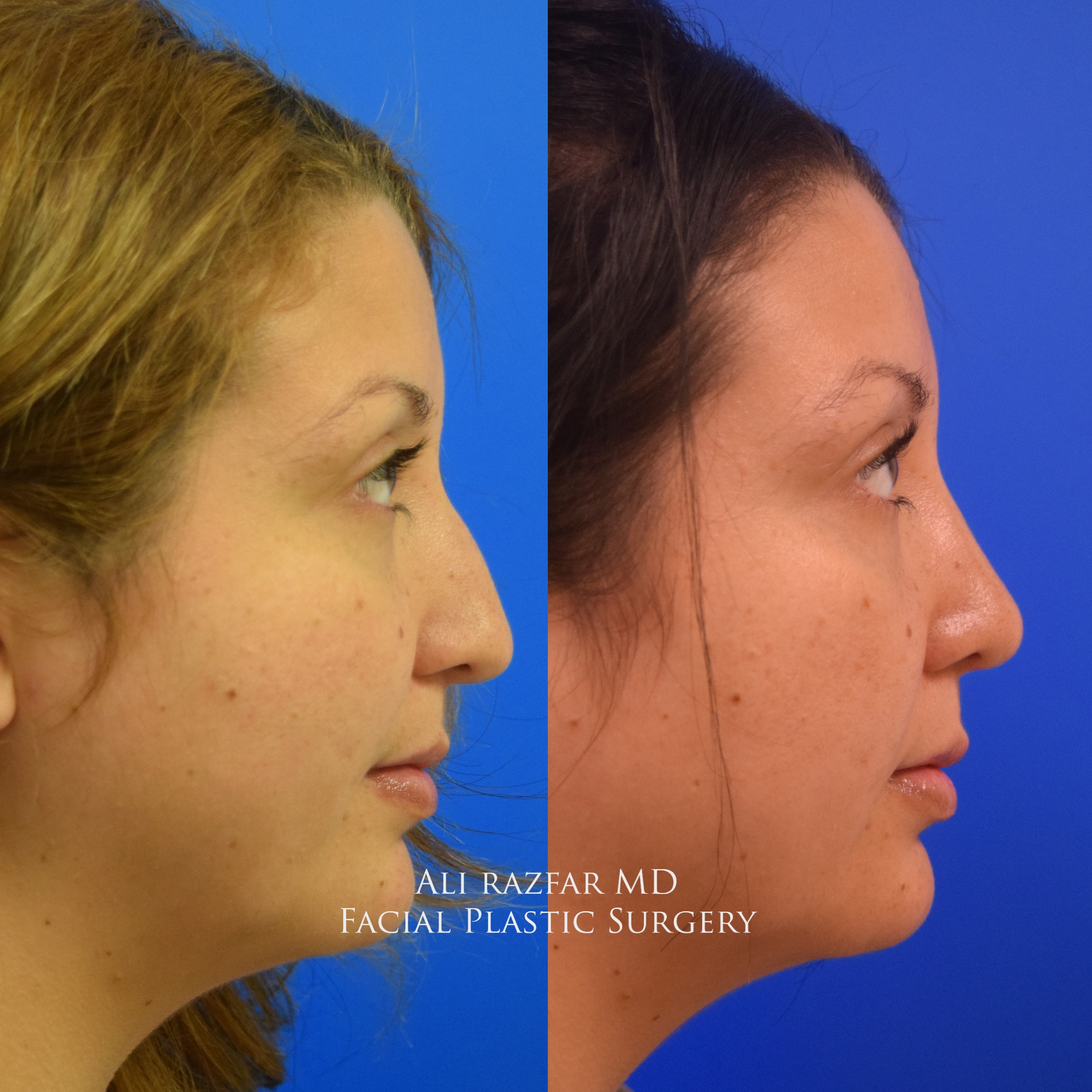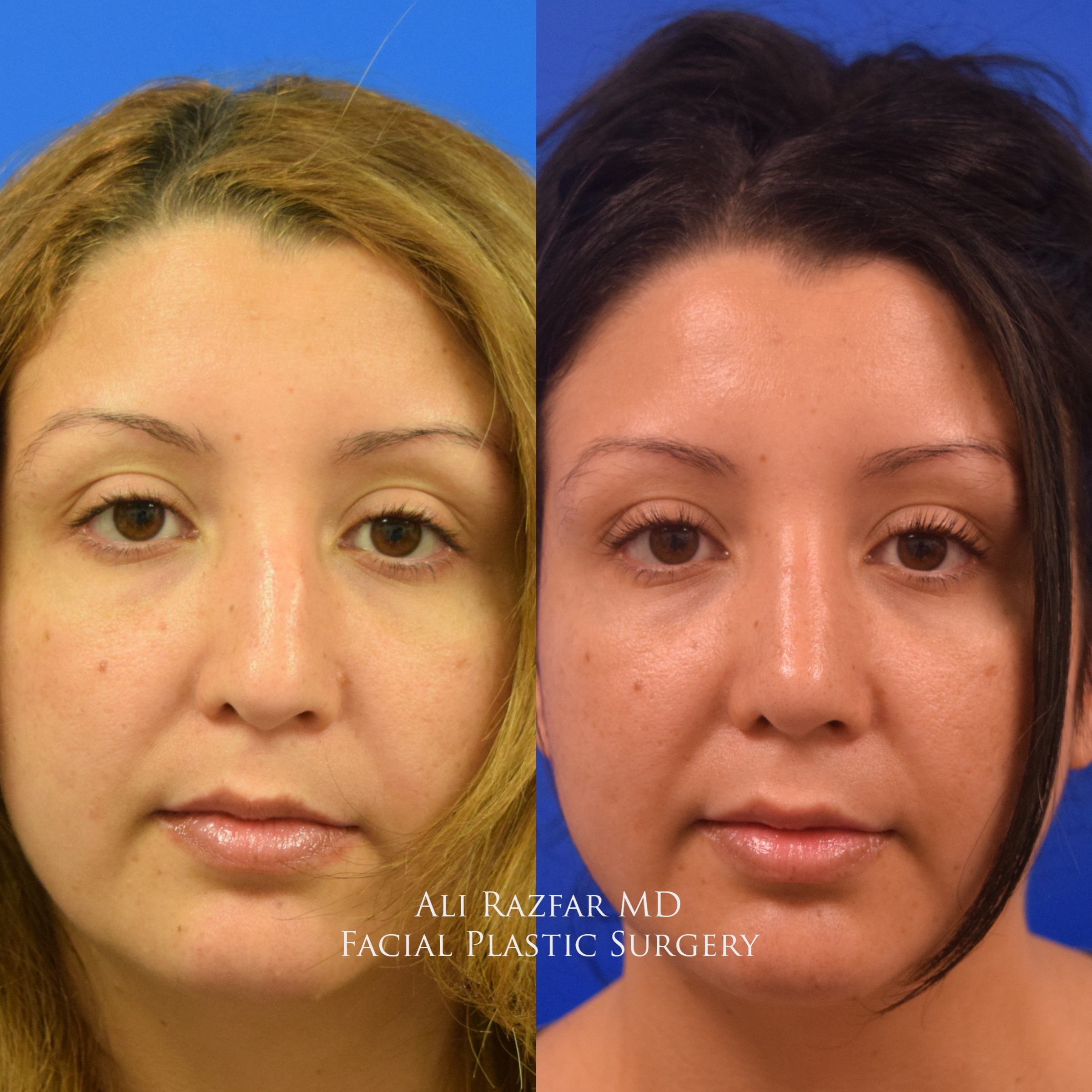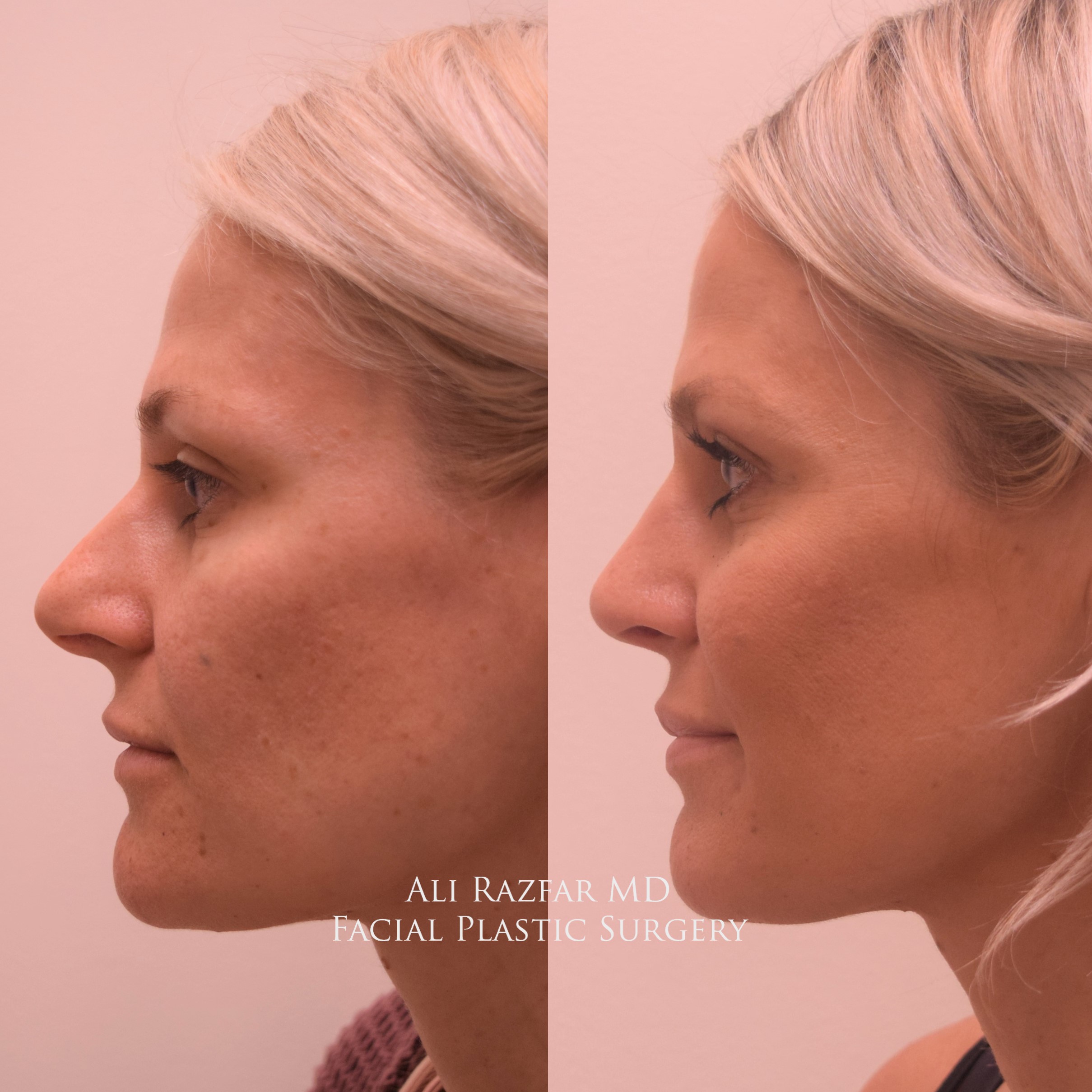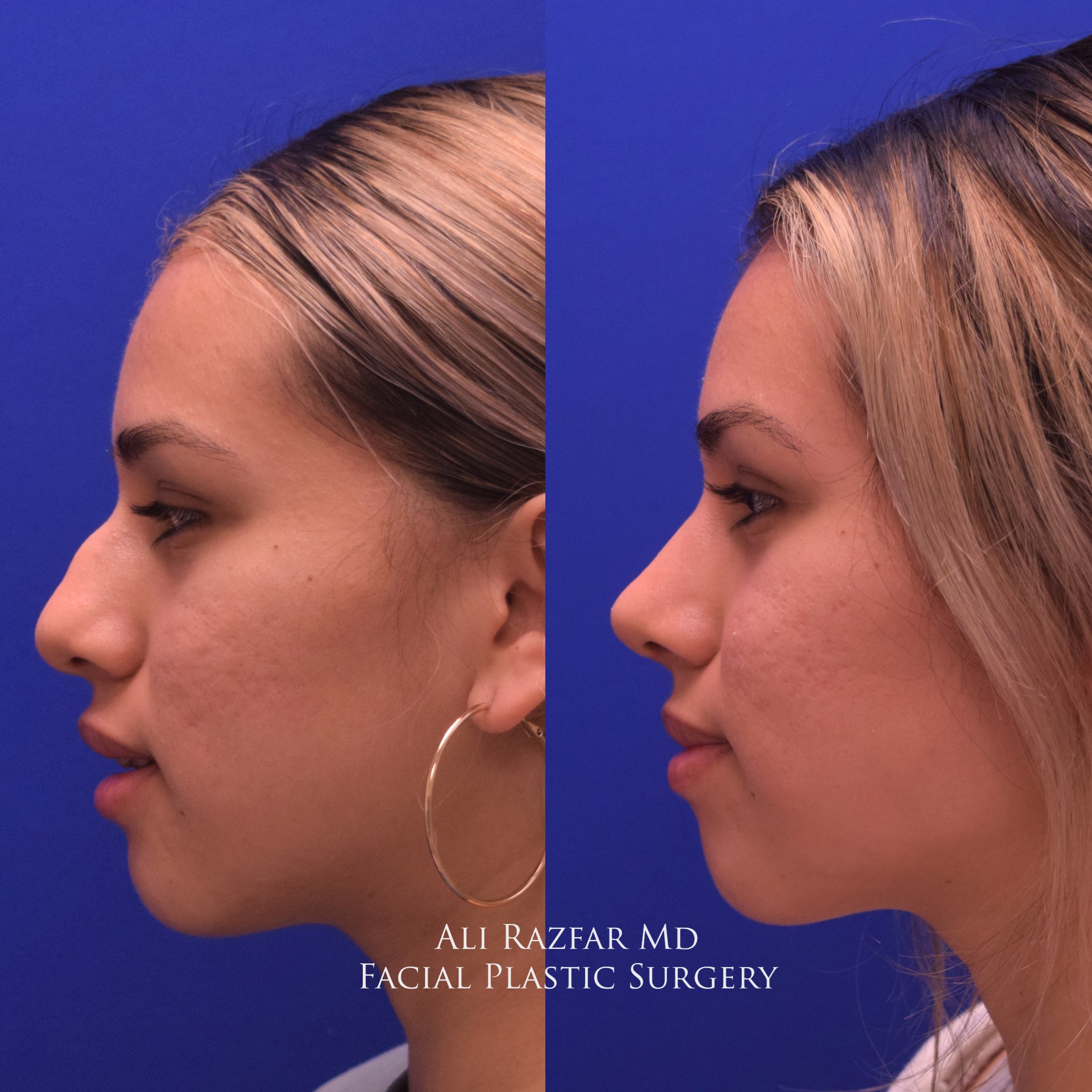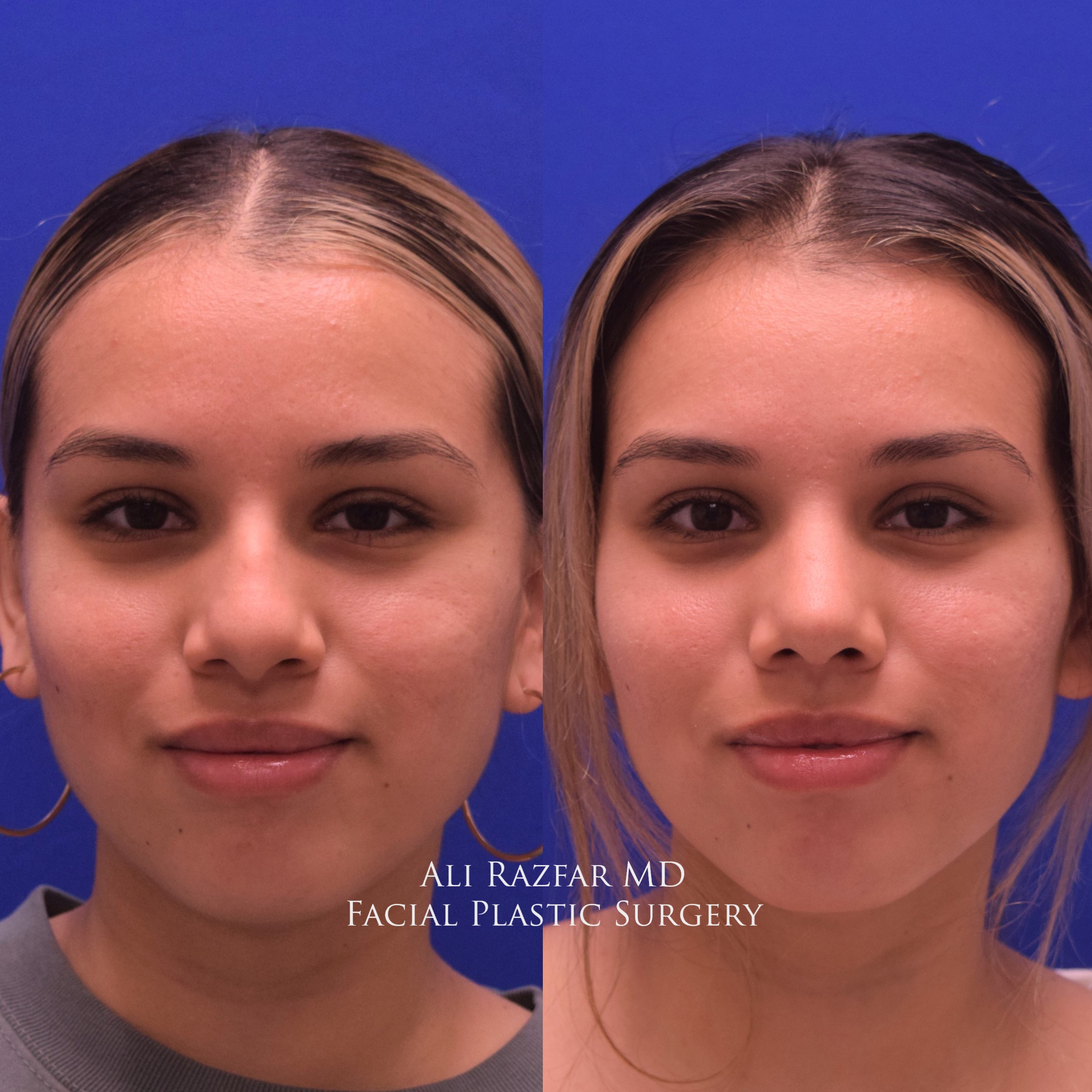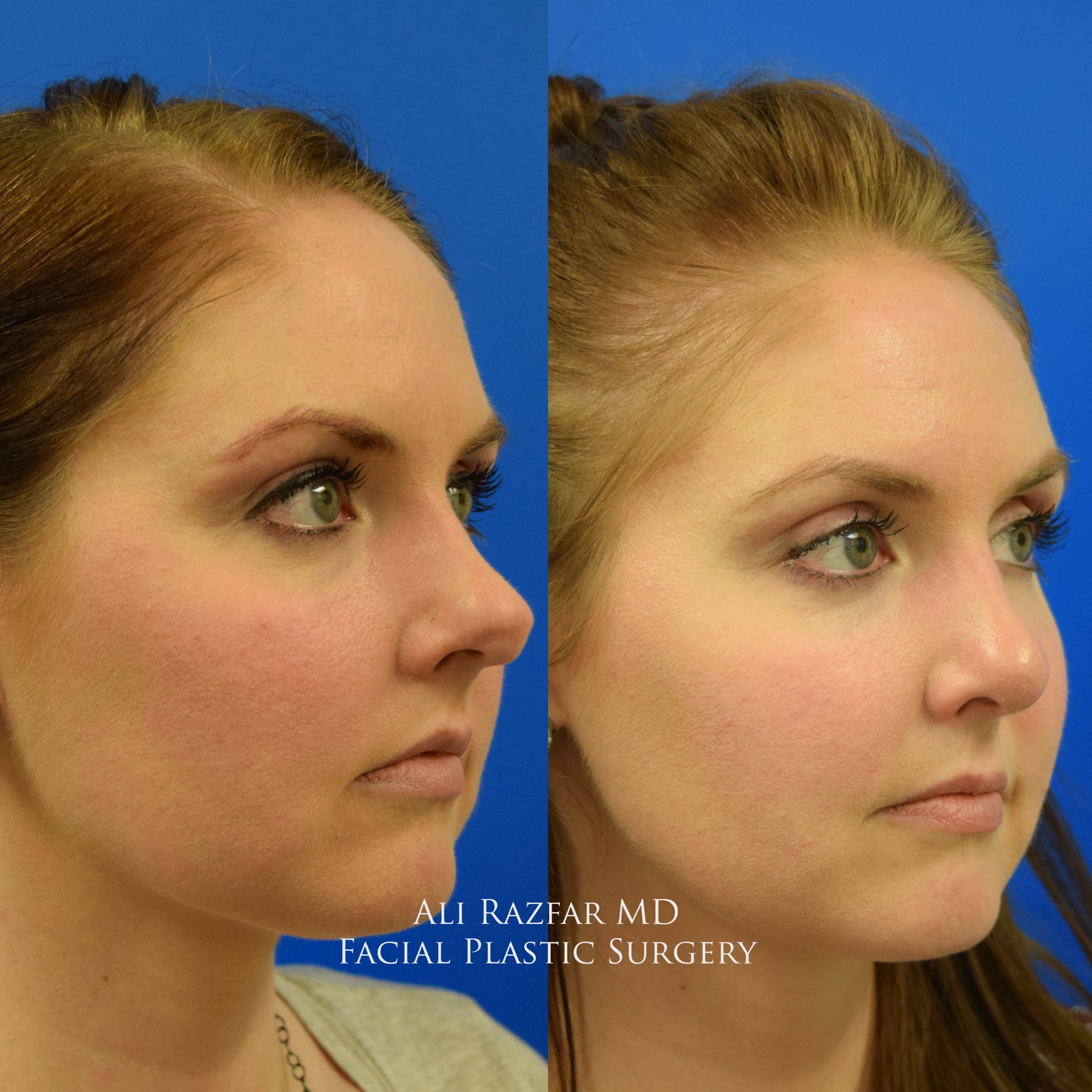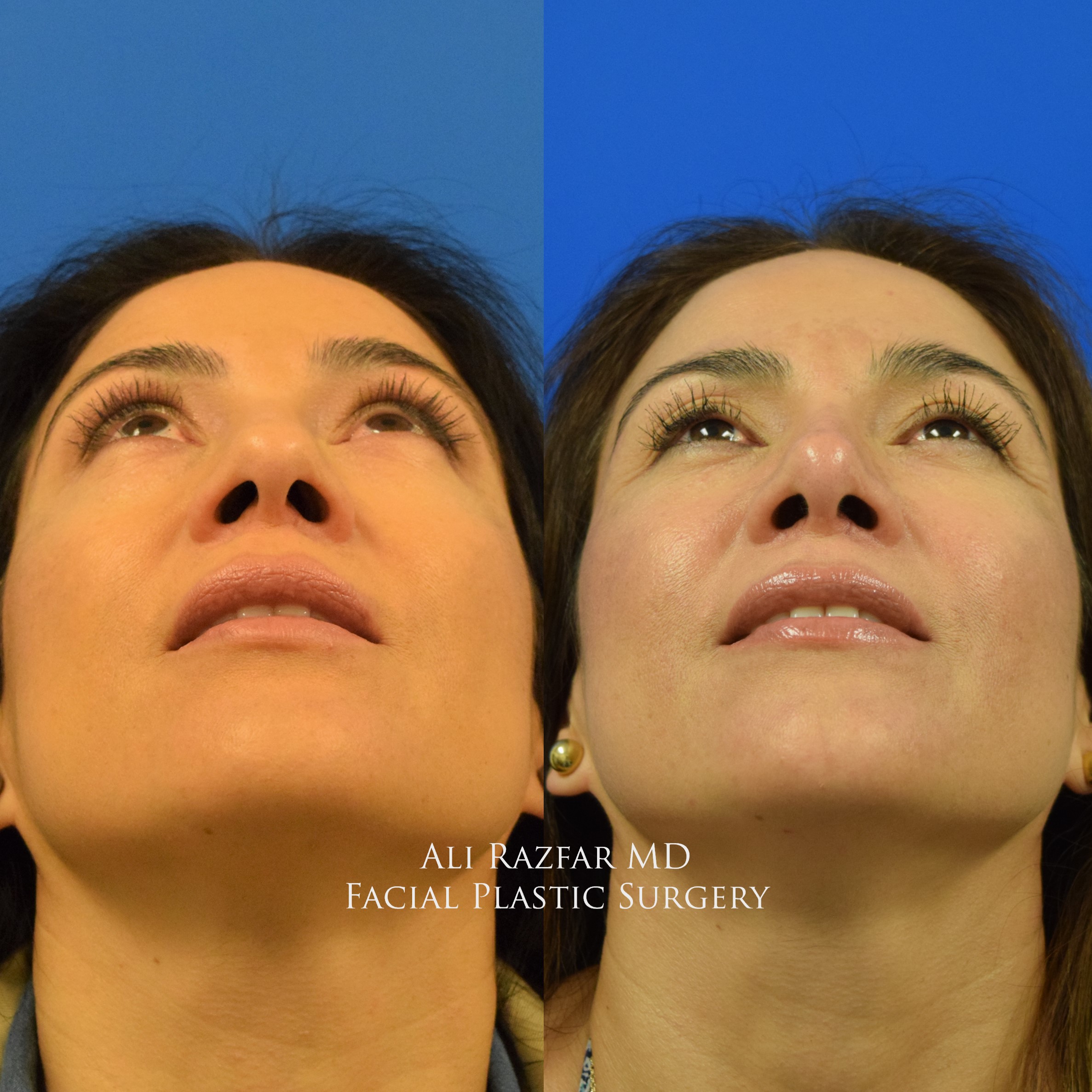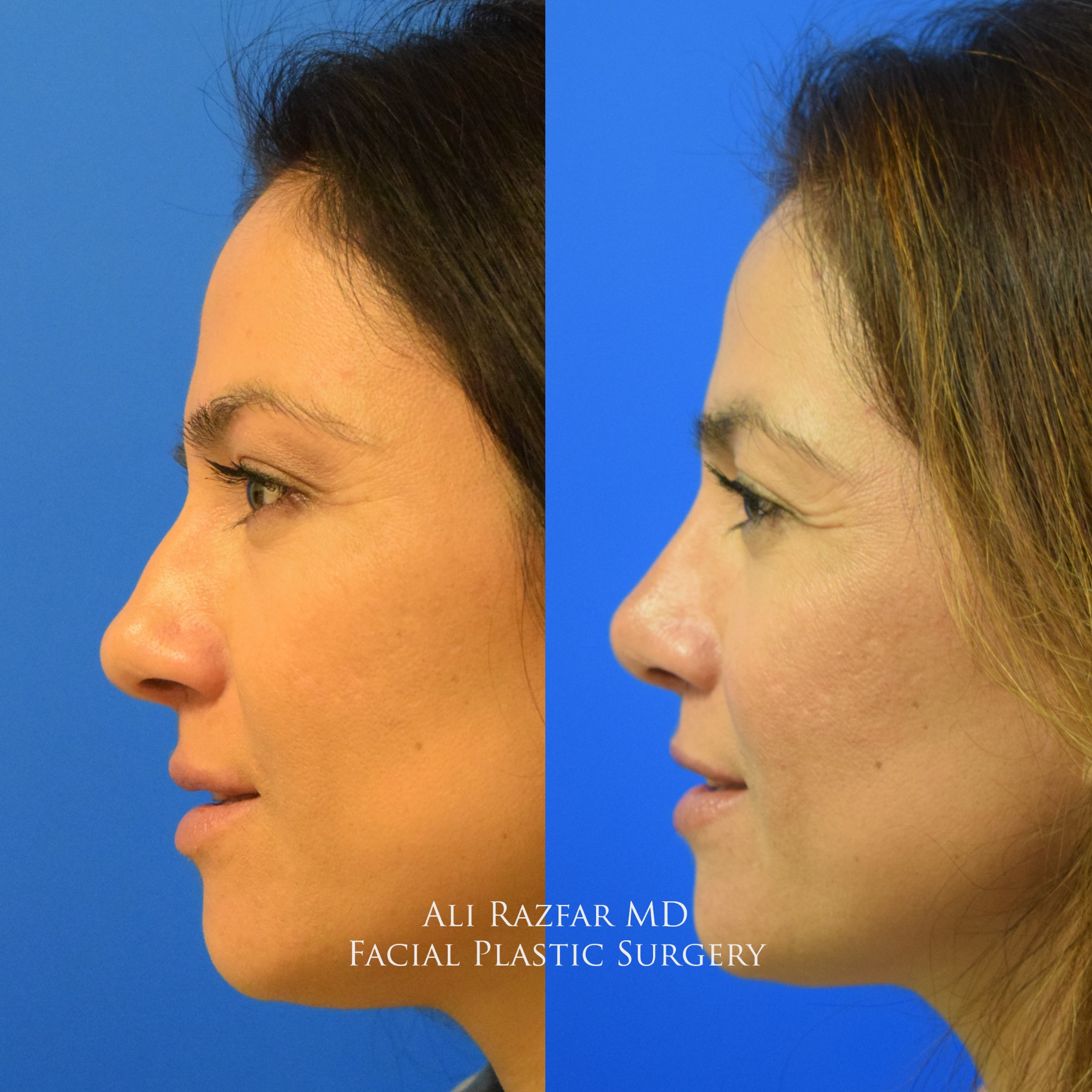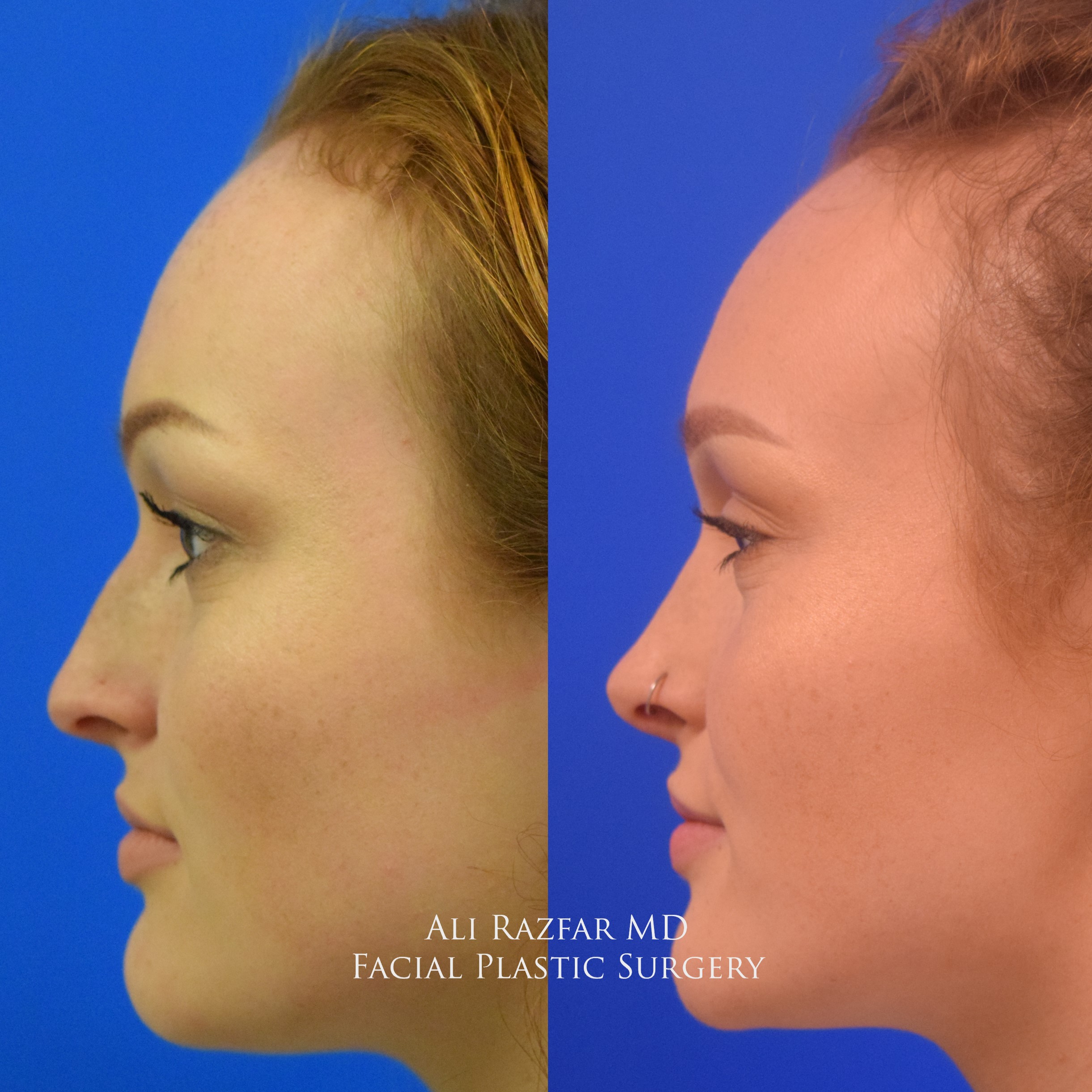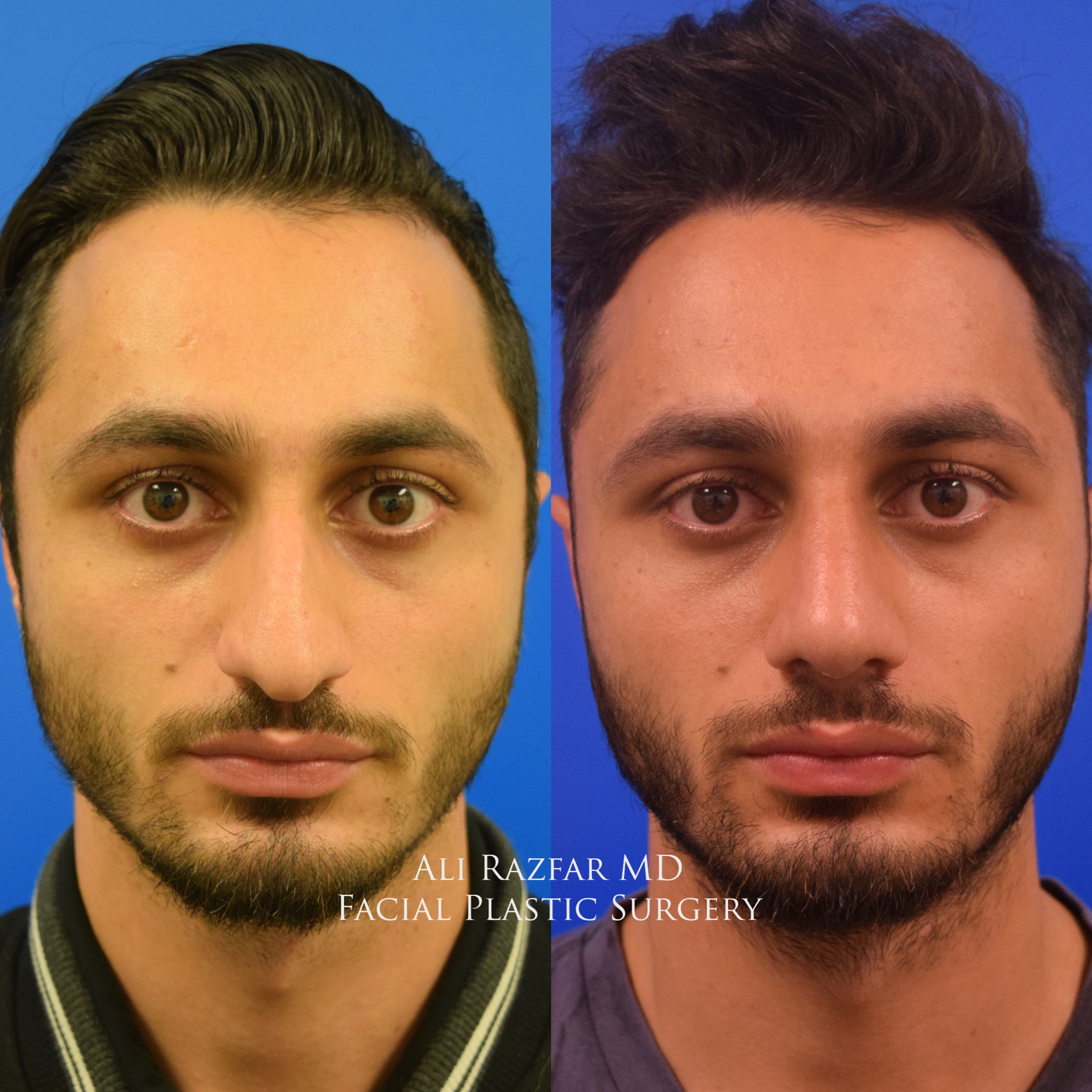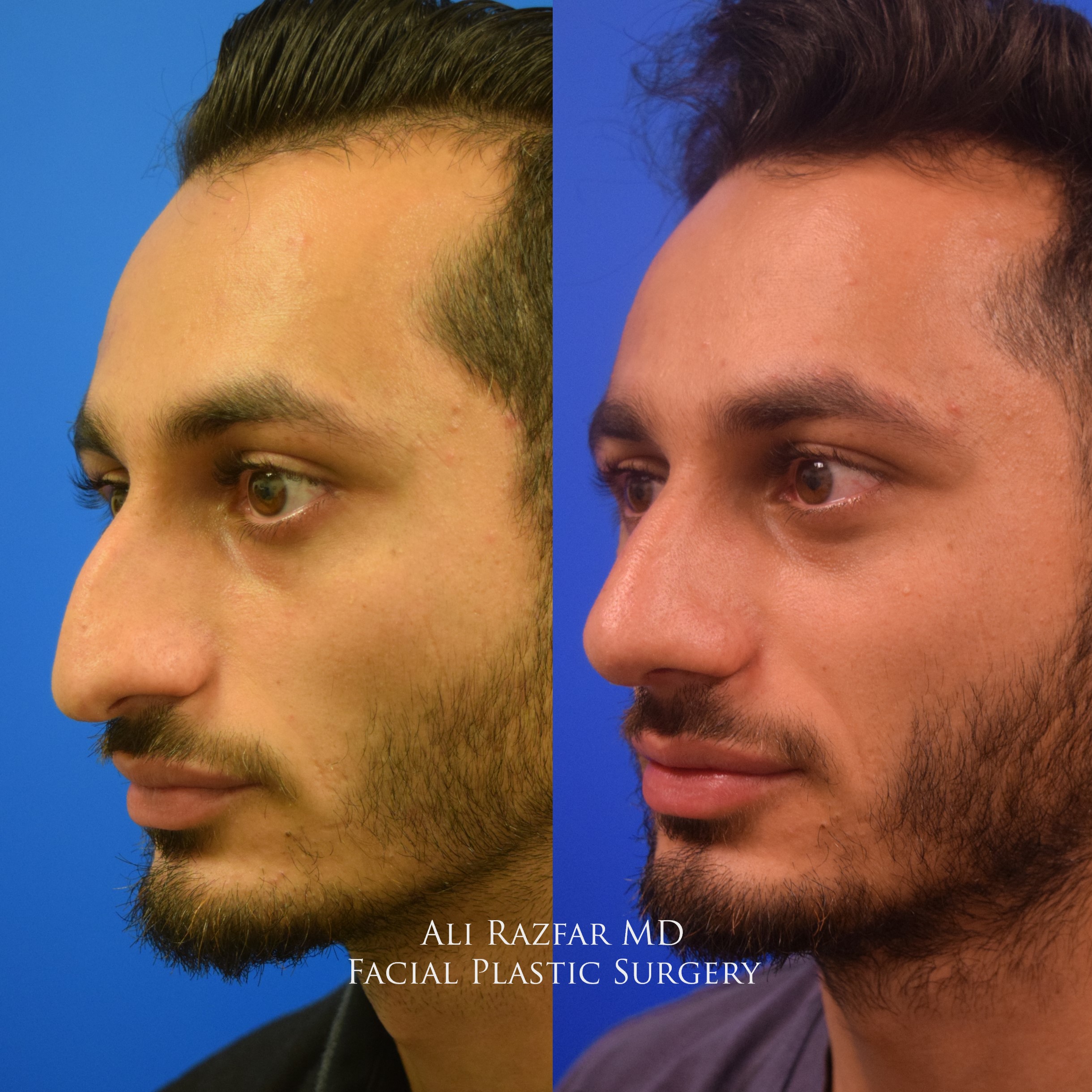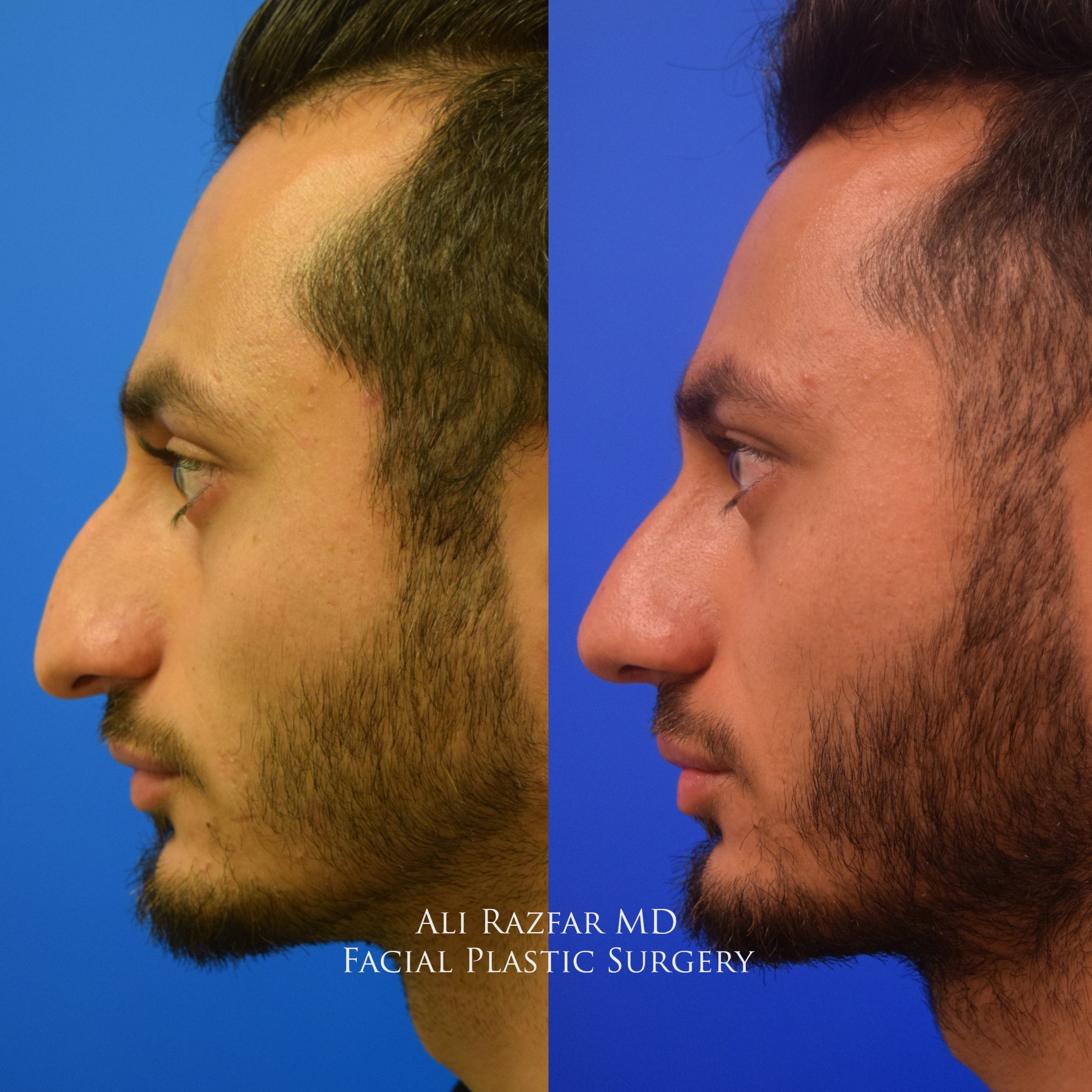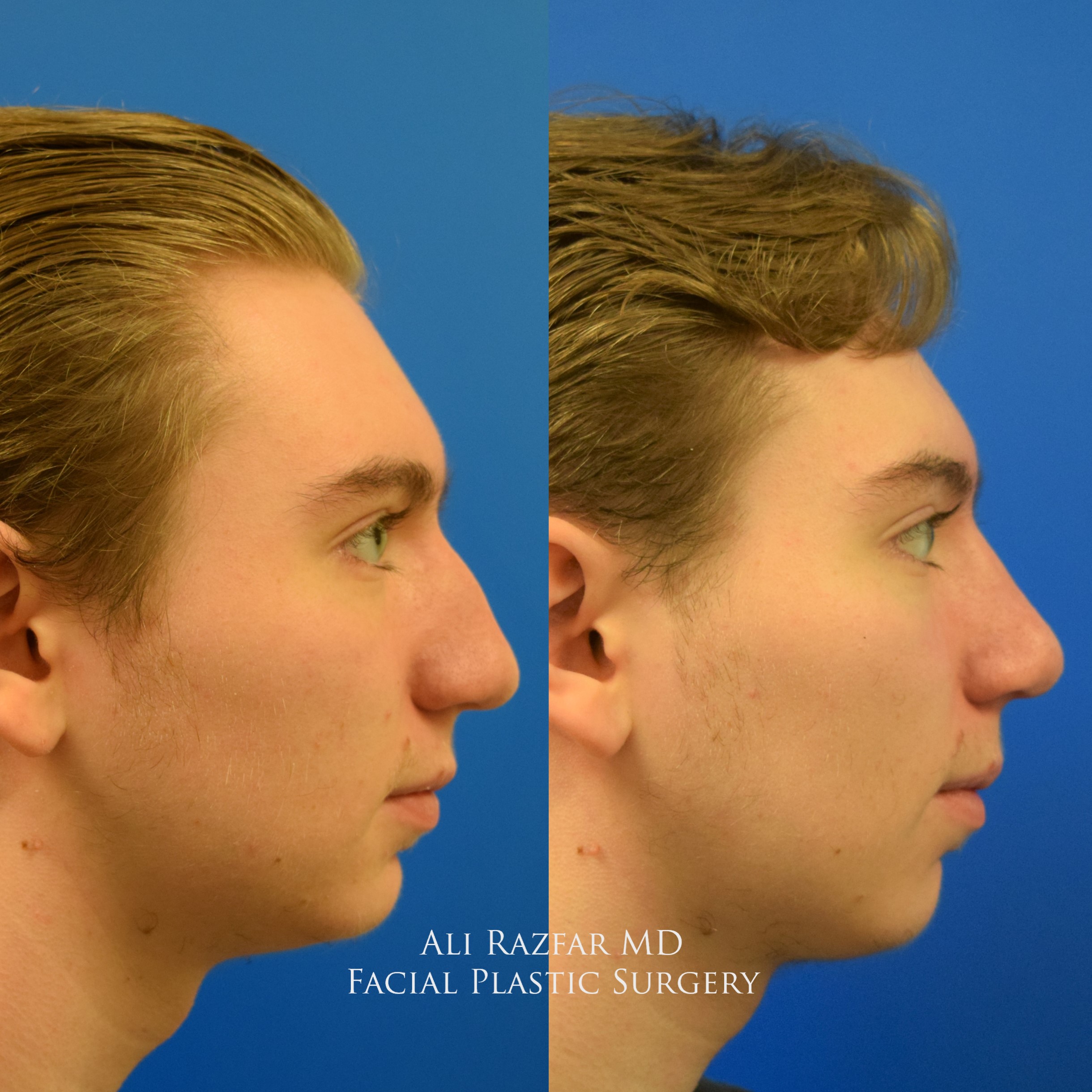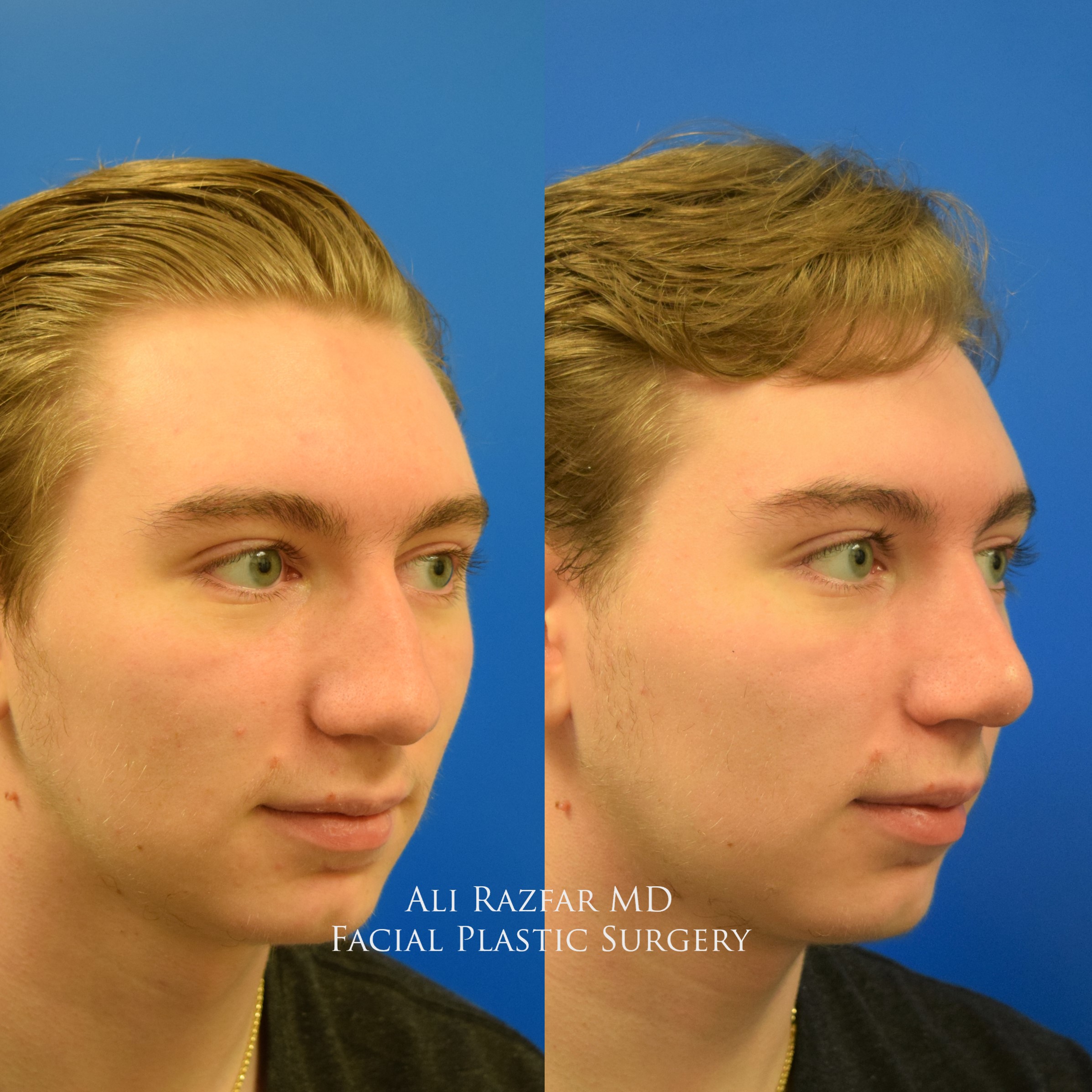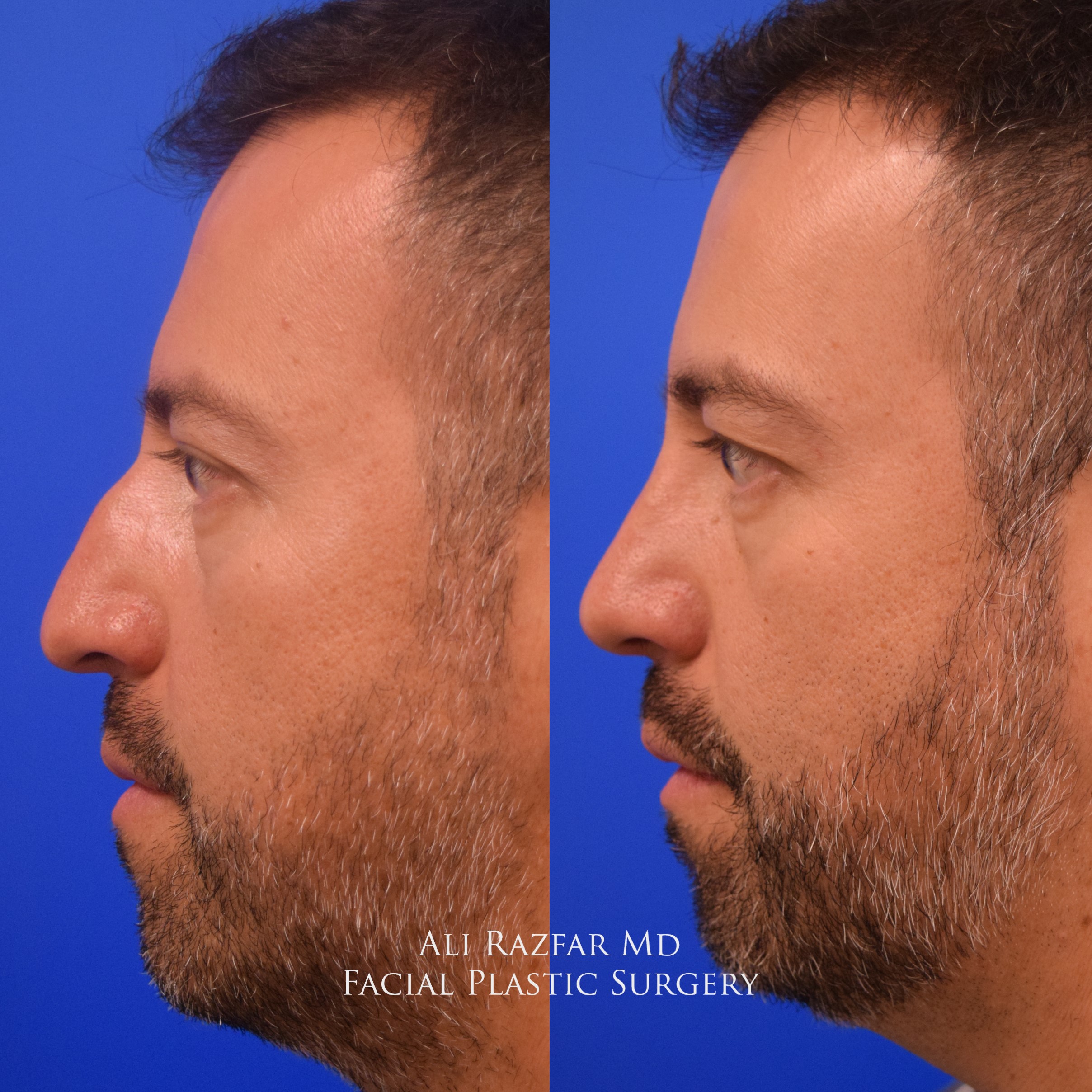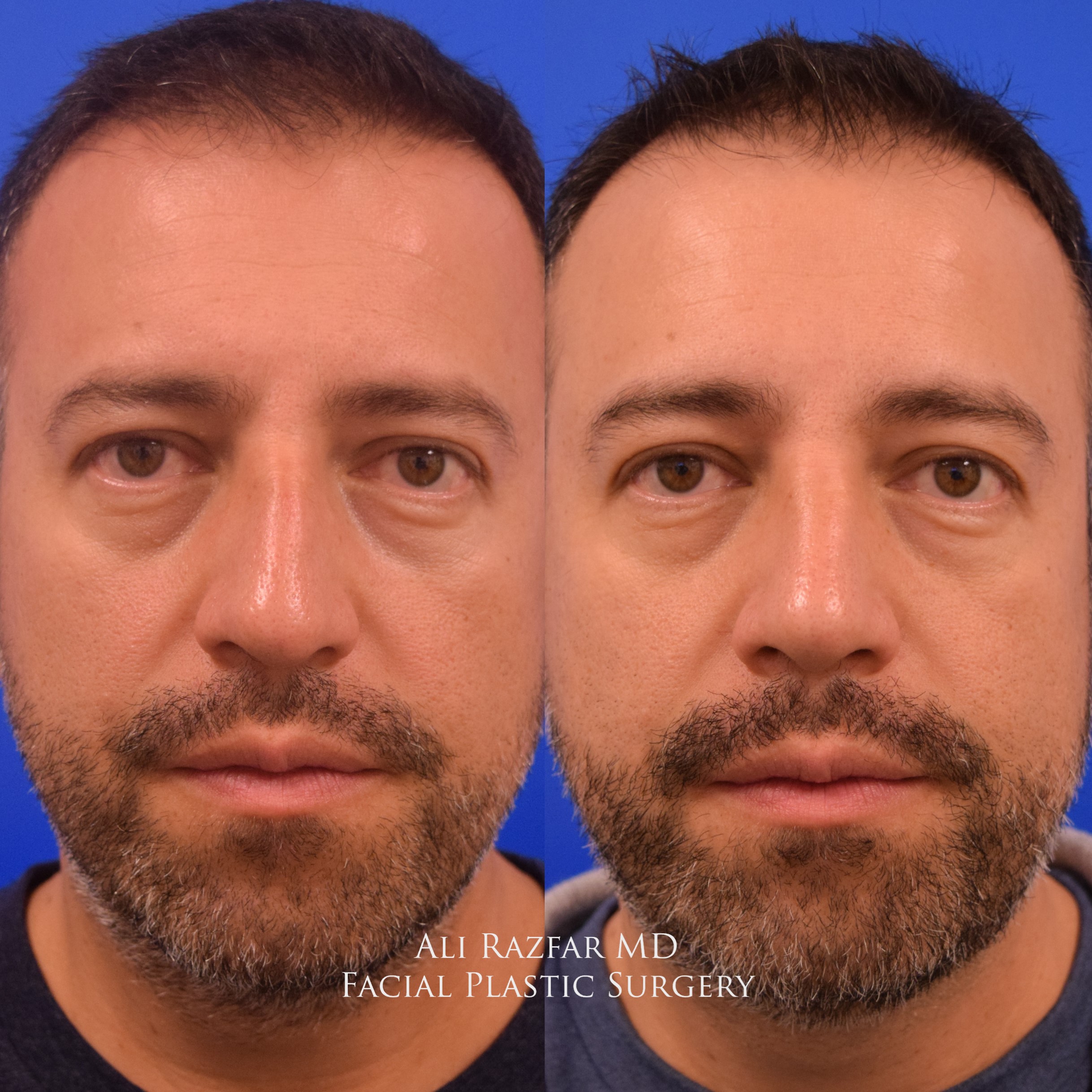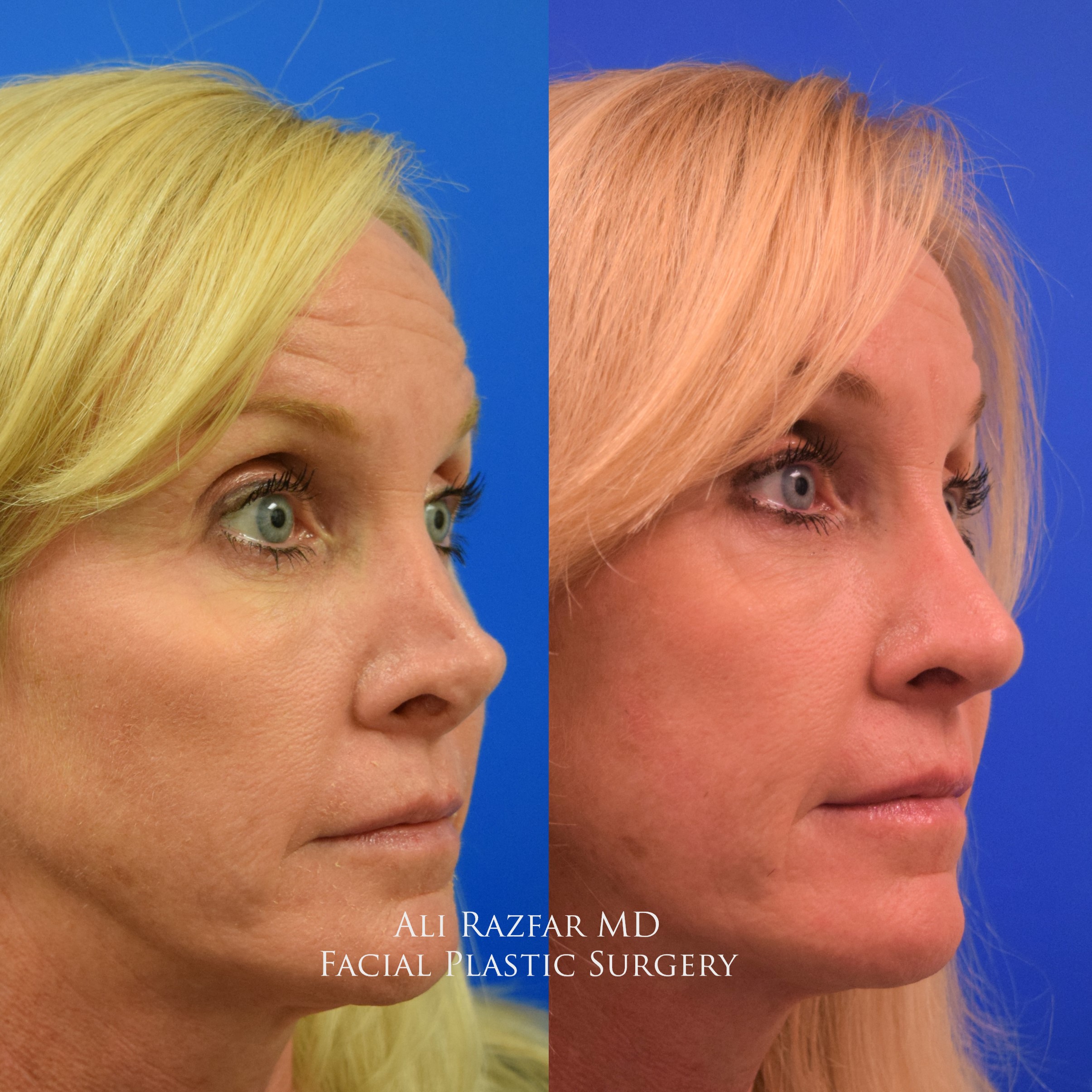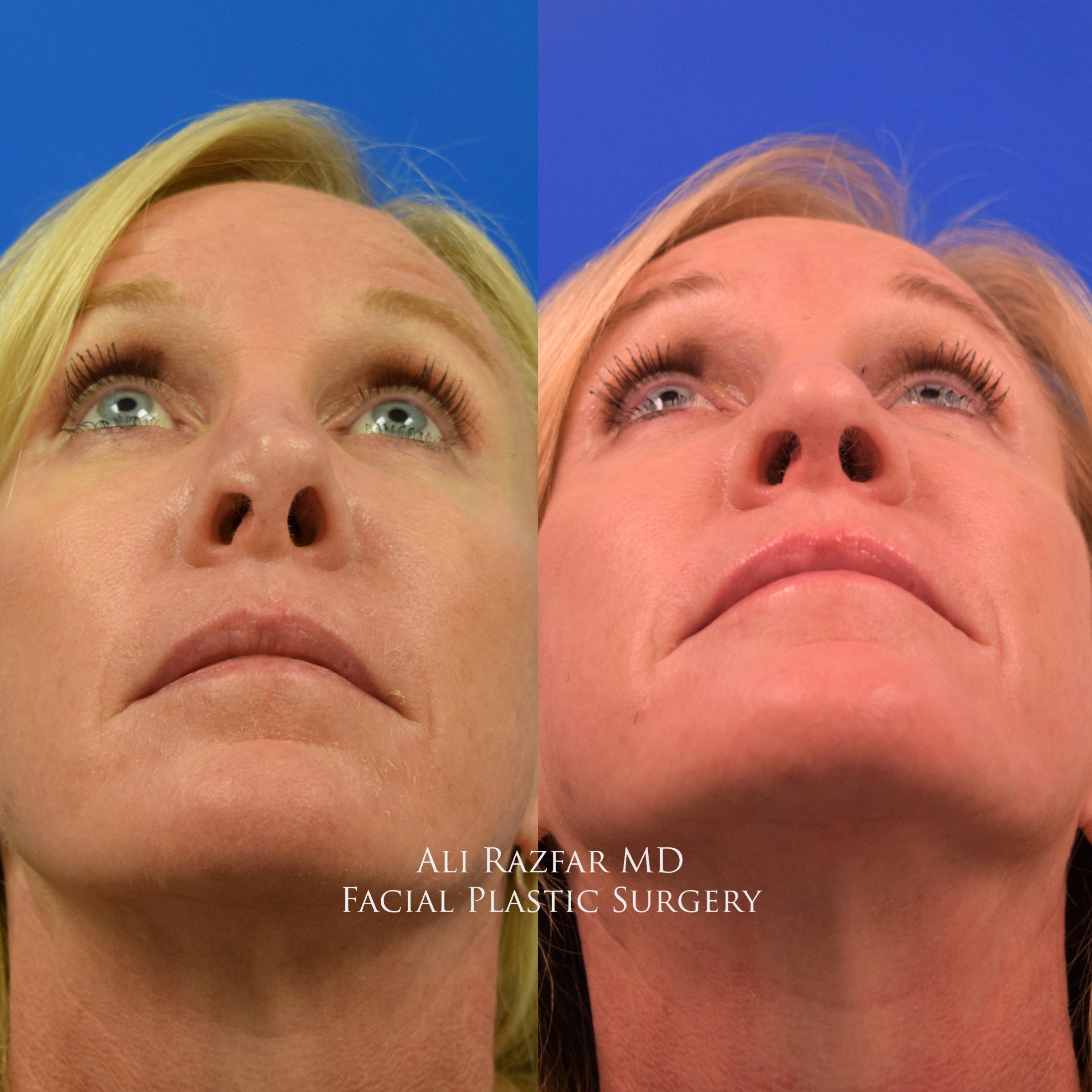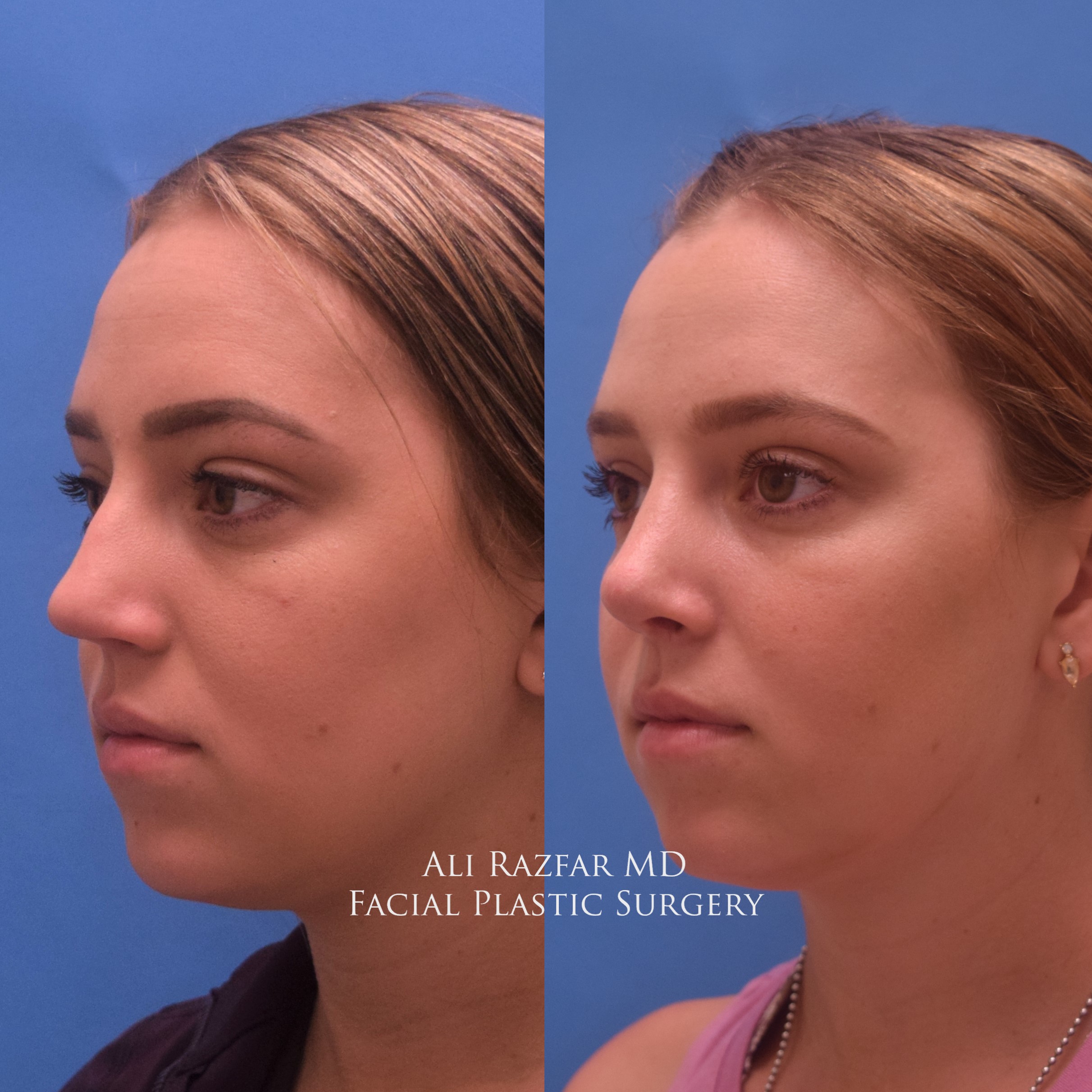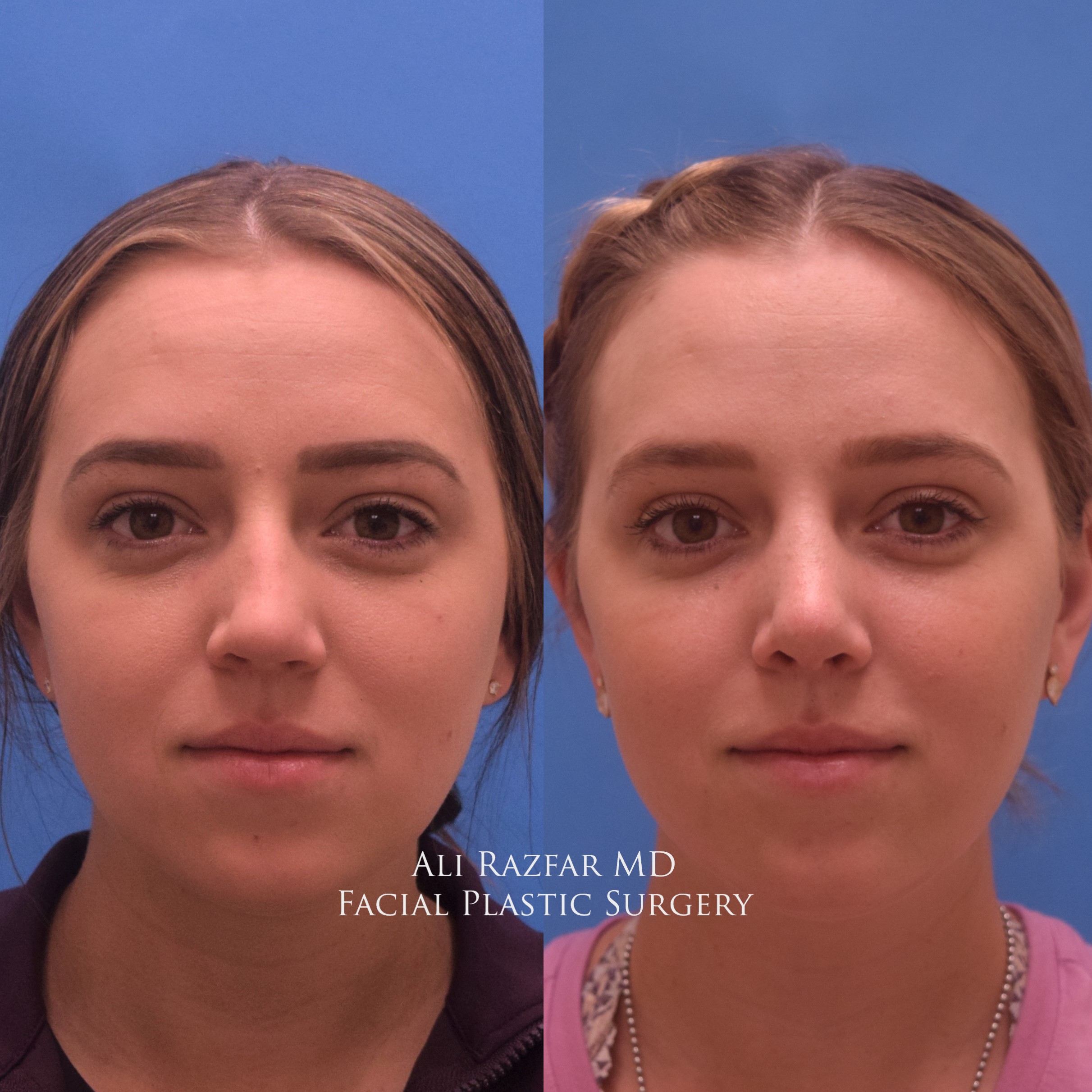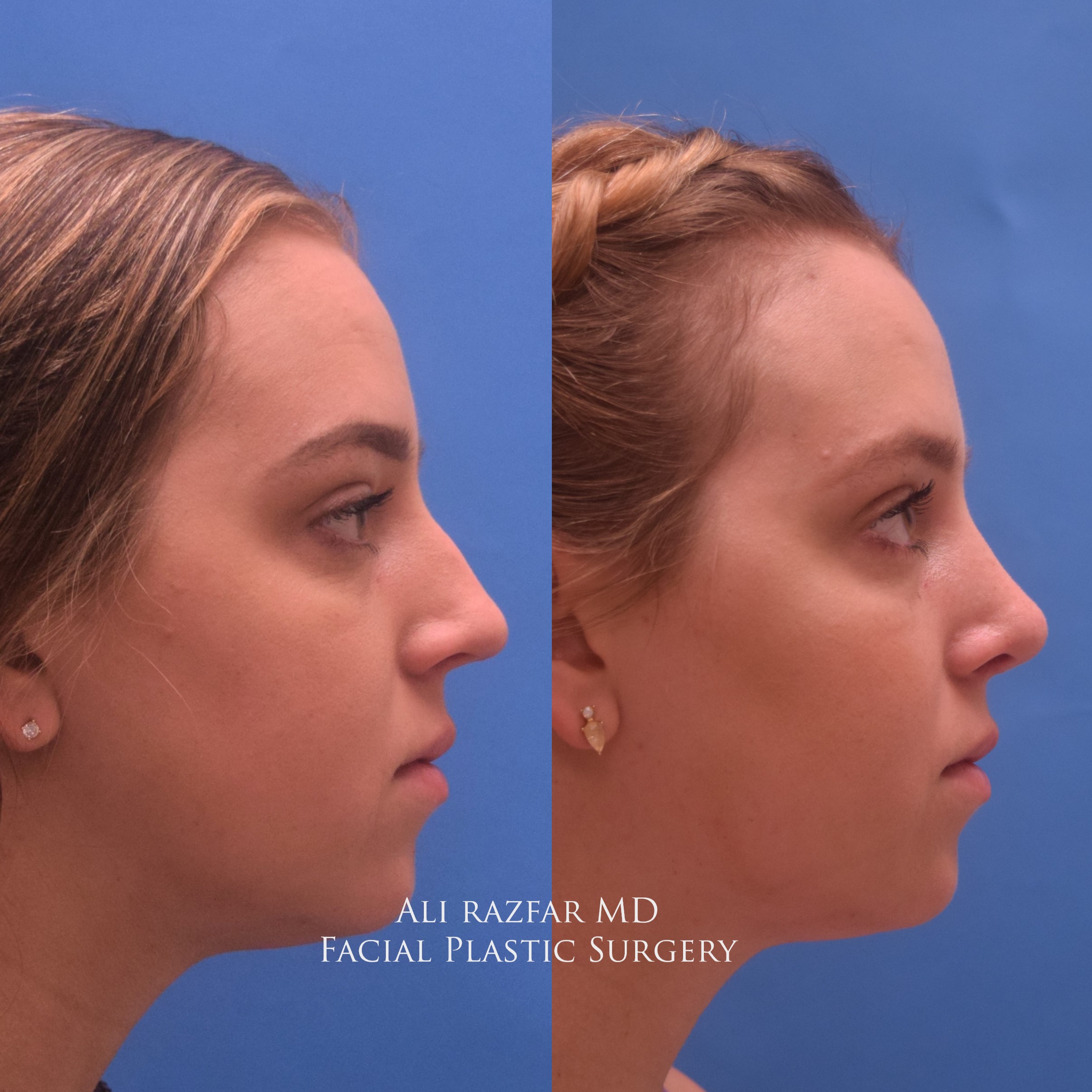Rhinoplasty Patient Gallery
Patient 3


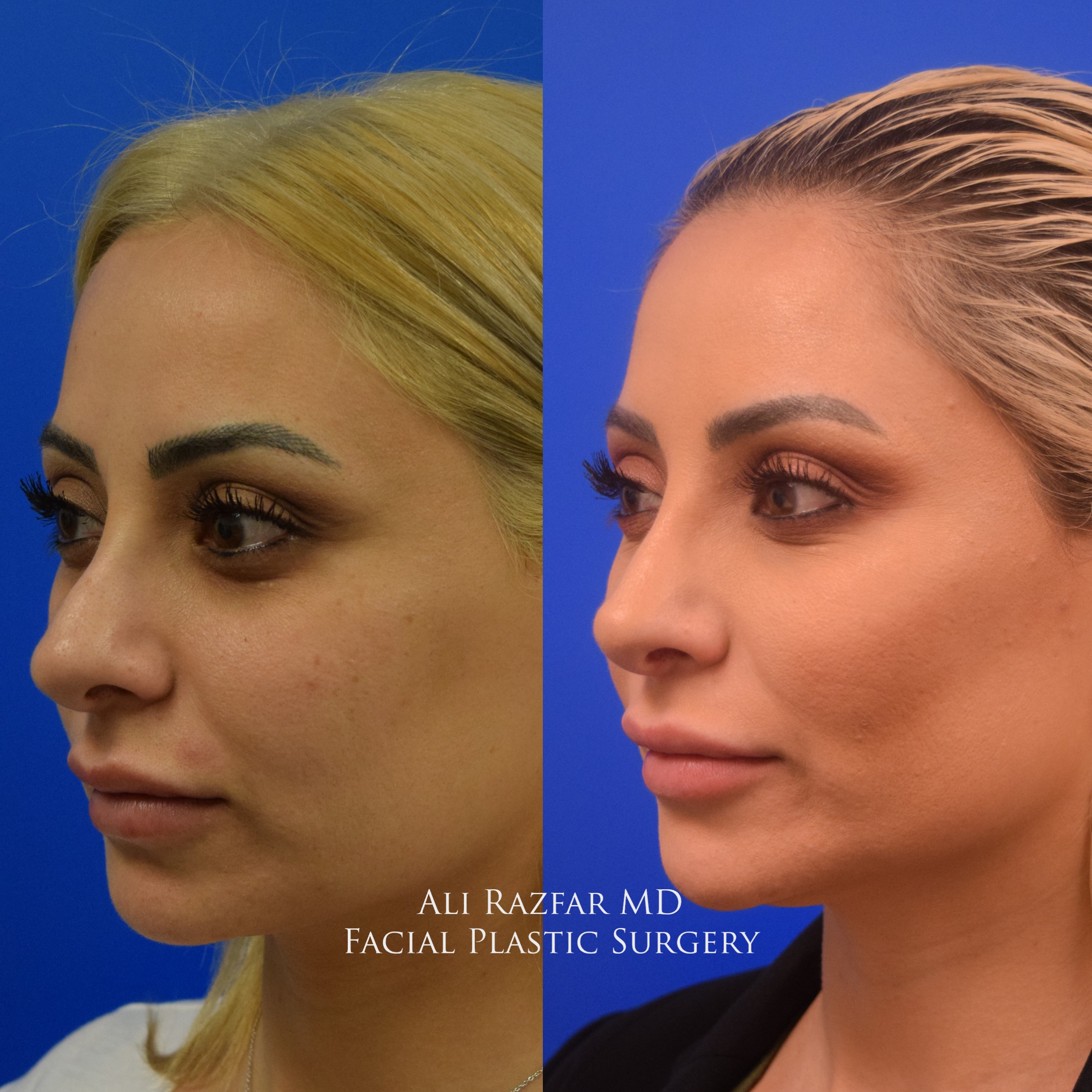
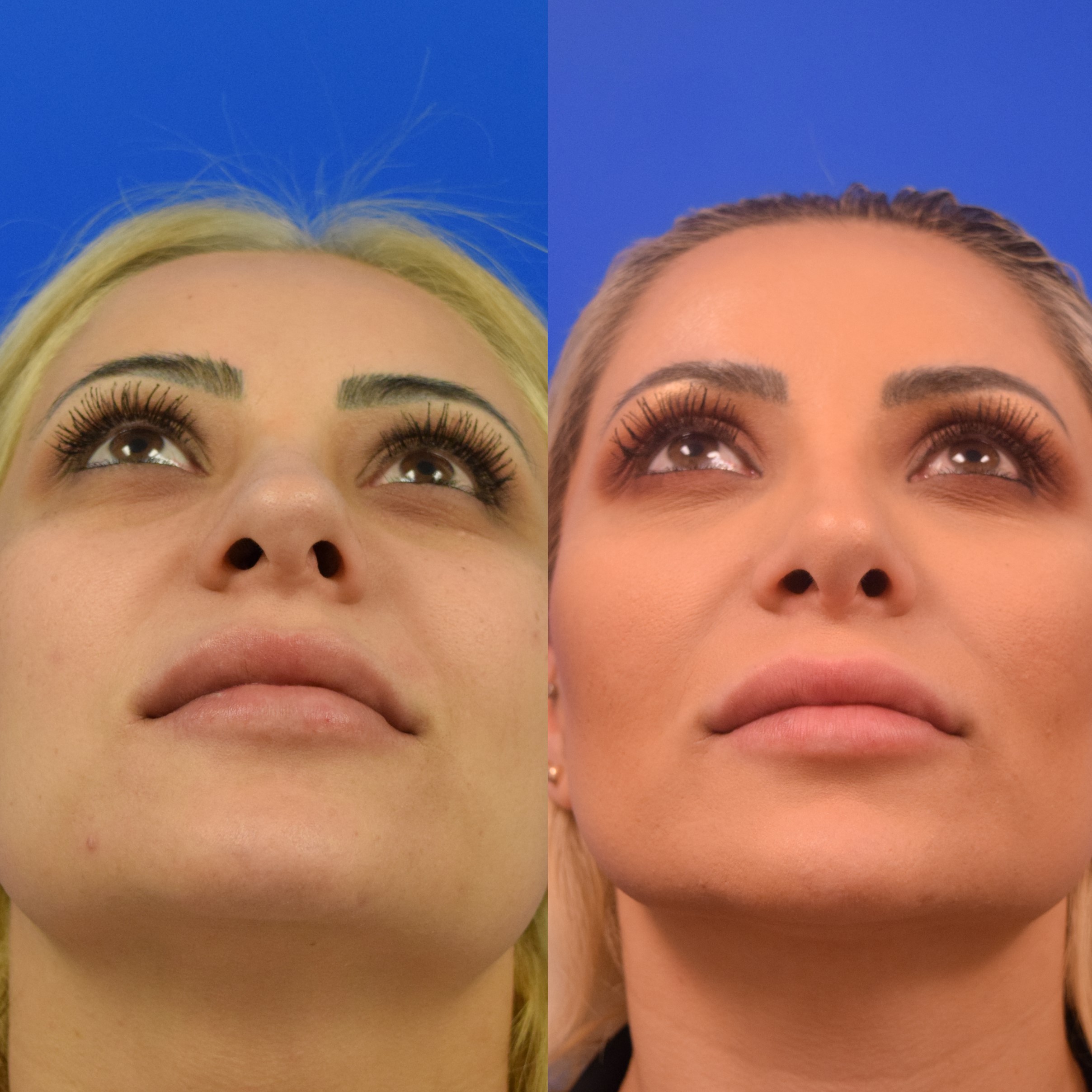
Patient 4
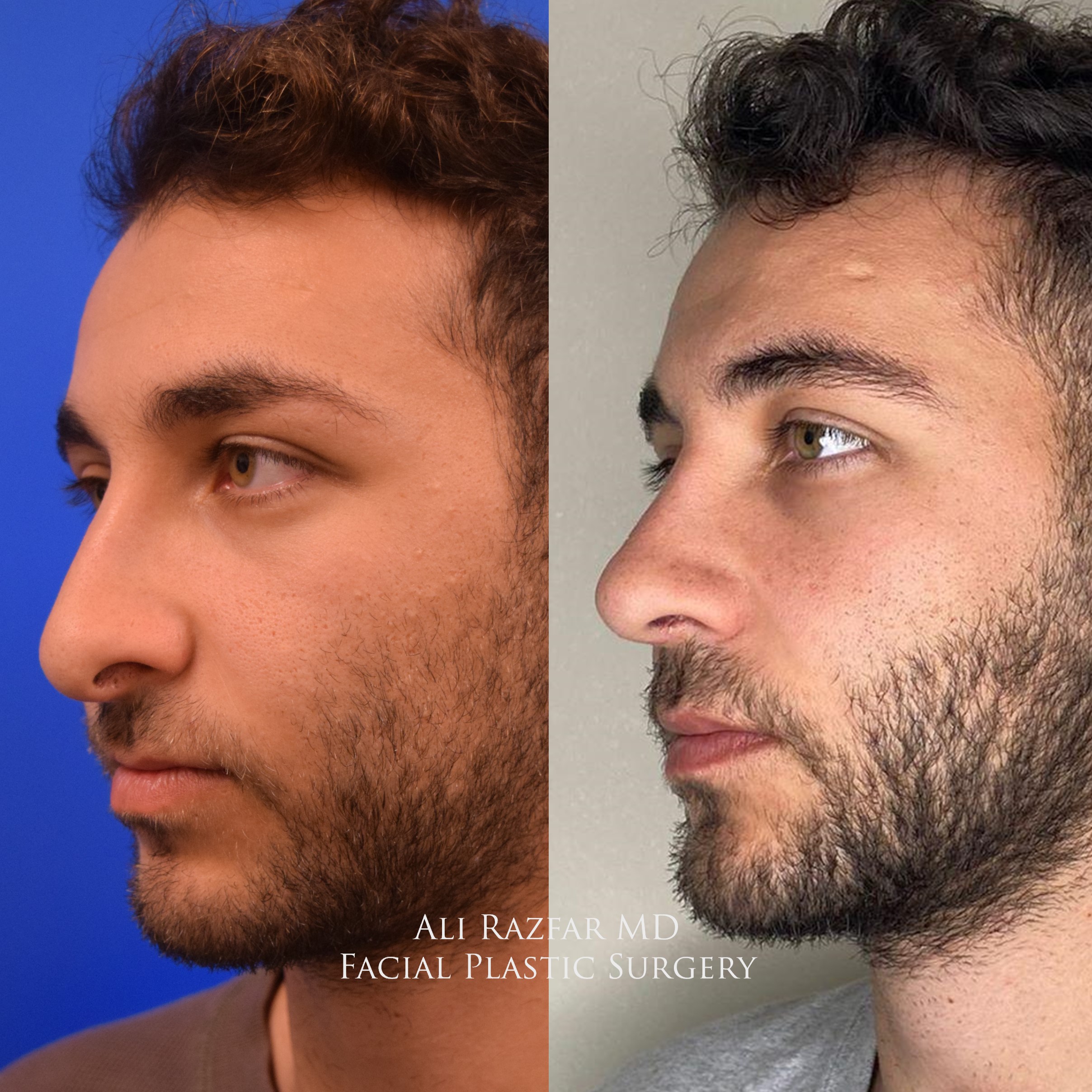


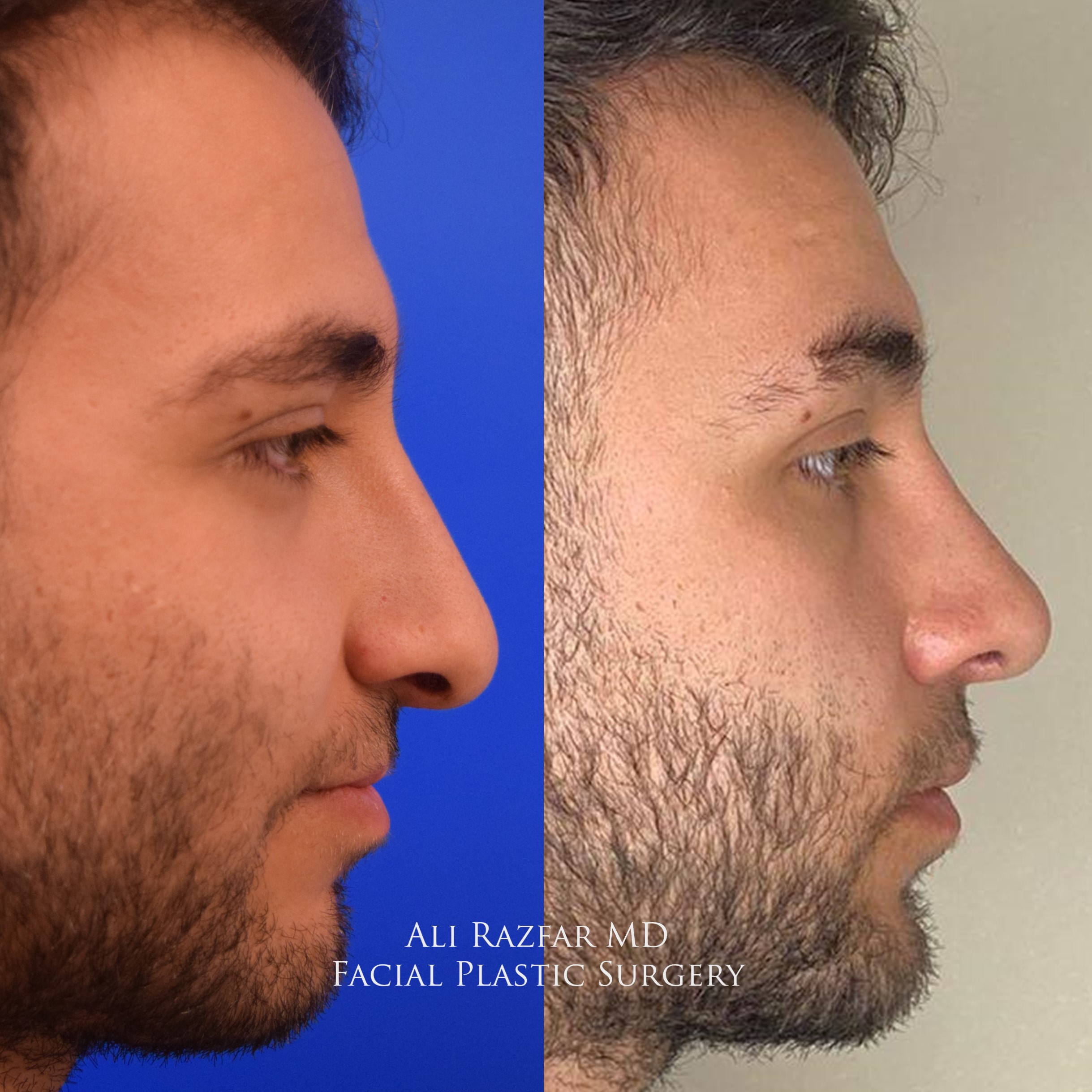

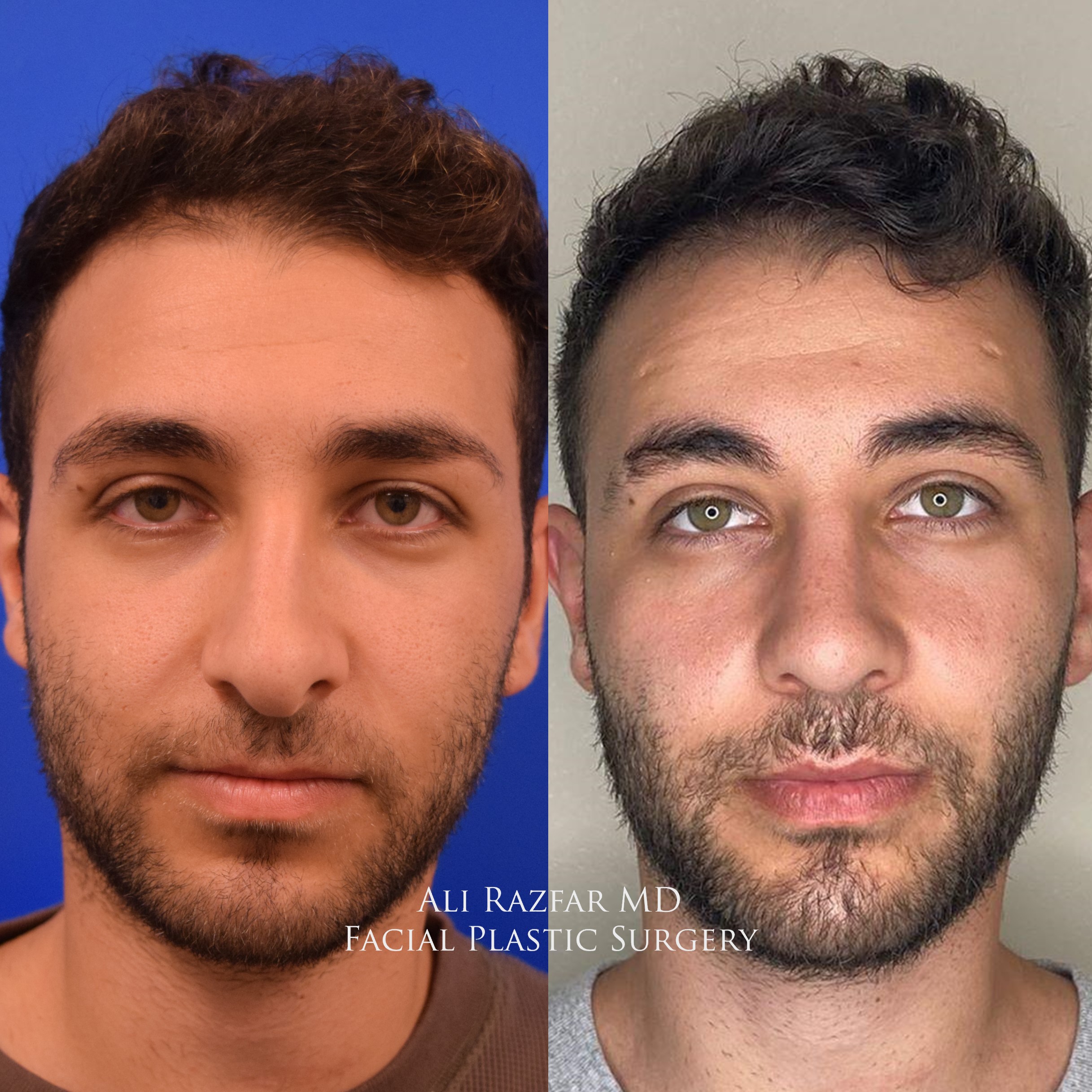
Frequently Asked Questions
There are generally two different approaches used in rhinoplasty surgery. Dr. Razfar has expertise in both the open and closed approach. Subtle enhancements can often be accomplished with the closed (endonasal) approach resulting in no external scar while more involved procedures require the open approach. While the open approach does result in a small scar in the columella, this is nearly invisible after a few months with proper closure technique.
Most patients will feel congested after surgery and have some discomfort that is relieved with mild narcotic pain medications. Patient will have a cast on their nose and in some cases, small plastic splints inside the nose. These are removed after one week. Some patients may experience bruising that can last 1-2 weeks. The swelling is most severe for the first 3-4 weeks after surgery. There is typically mild swelling, particularly at the tip, for up to one year after surgery.
Patients can often return to work once the cast and splints are removed about 1 week after surgery. If your work requires heavy lifting or strenuous physical activity, you will need an additional 2-3 weeks off.
Strenuous activity should be avoided for 1 month after surgery. Very light exercise such as walking can begin 2 weeks after surgery. Any activity that can cause trauma or risk bumping the nose should be avoided for at least 2 months.
Dr. Razfar generally does not pack the nose as this causes unnecessary discomfort during the recovery period. You may have plastic splints inside the nose to aid in healing. Patient can generally breath through their nose with splints in place although it may feel congested.
If you have breathing problems or prior nasal trauma, the insurance will generally cover the functional aspect of the rhinoplasty. However, the cosmetic portion of the procedure is generally not covered.


